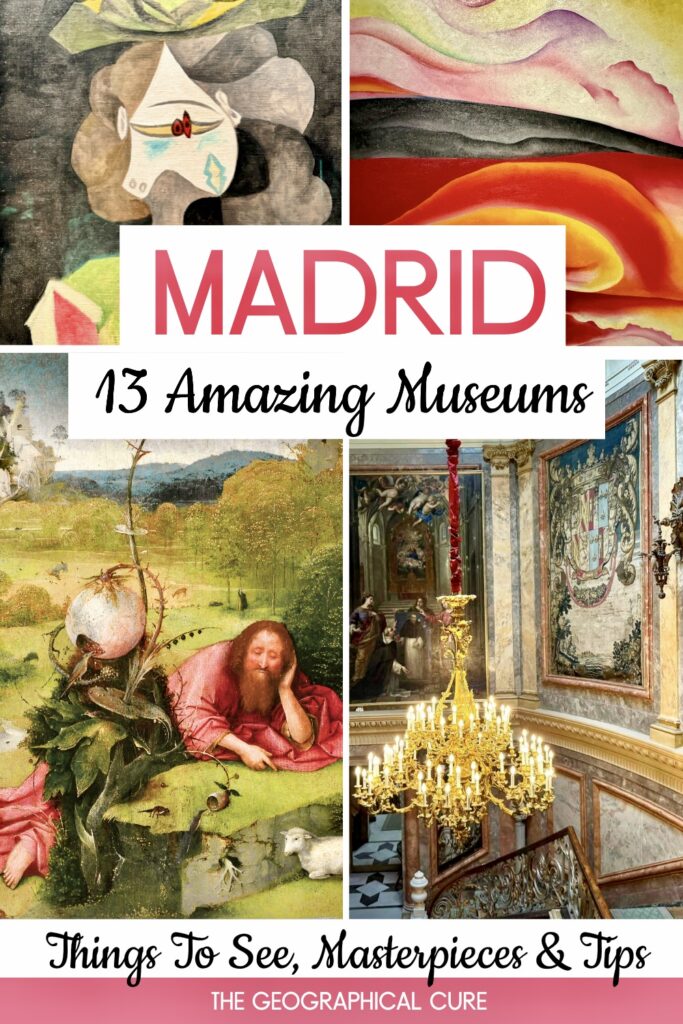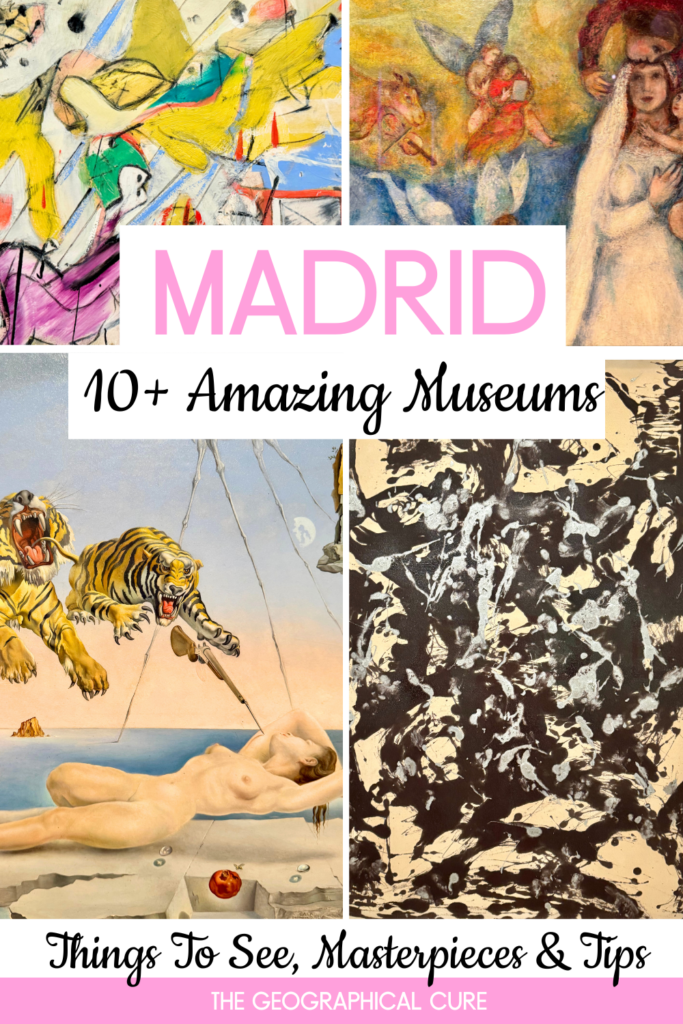Madrid easily stands out as a top destination for art enthusiasts. There are some true heavyweights in the city.
The “Golden Triangle of Art” — the Prado, Reina Sofia, and Thyssen-Bornemisza museums — is a truly impressive hub for art lovers, with every museum within walking distance.
Madrid also boasts innovative museums with modern and contemporary art. And period house-museums where you can step back in time and see how the aristocracy lived.
So you don’t miss anything, I’ve chosen a baker’s dozen must visit museums in Madrid for you to experience when you’re visiting the city.
Over the years, I’ve visited them all myself. My personal favorites are the Prado, the Thyssen, the Liria Palace, and the Caixa Forum.
The Reina Sofia also get big points as the home of Picasso’s famed Guernica. And the Cerrablo Museum charms with its over-the-top decorative ethos.
This guide gives you an overview of the best museums in Madrid, their must see masterpieces, and provides tips for visiting.
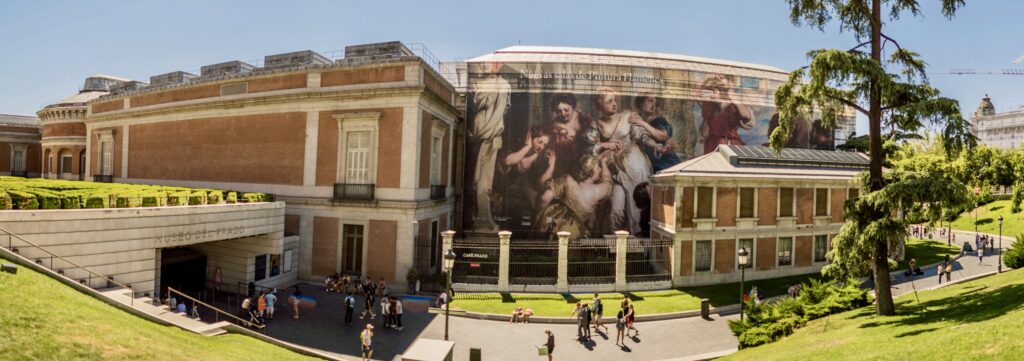
Best Museums In Madrid
Prado Museum
The Prado Museum is Spain’s most venerated museum and one of the top museums in Europe. It’s a non-stop steady stream of masterpieces by Europe’s greatest painters and unparalleled in Spanish artworks.
Founded by Ferdinand VII in 1819, the museum opened with 300 masterpieces, focusing on the zenith of Spanish art during the 16th and 17th centuries. Today, it boasts over 3,000 canvases, the core funded by wealthy Spanish kings.
The Prado is spread across multiple levels, with the primary exhibition spaces arranged over two main floors: the ground floor (12th through 17th centuries) and the first floor (18th and 19th century).
There is additional exhibition space in the basement for temporary exhibits.
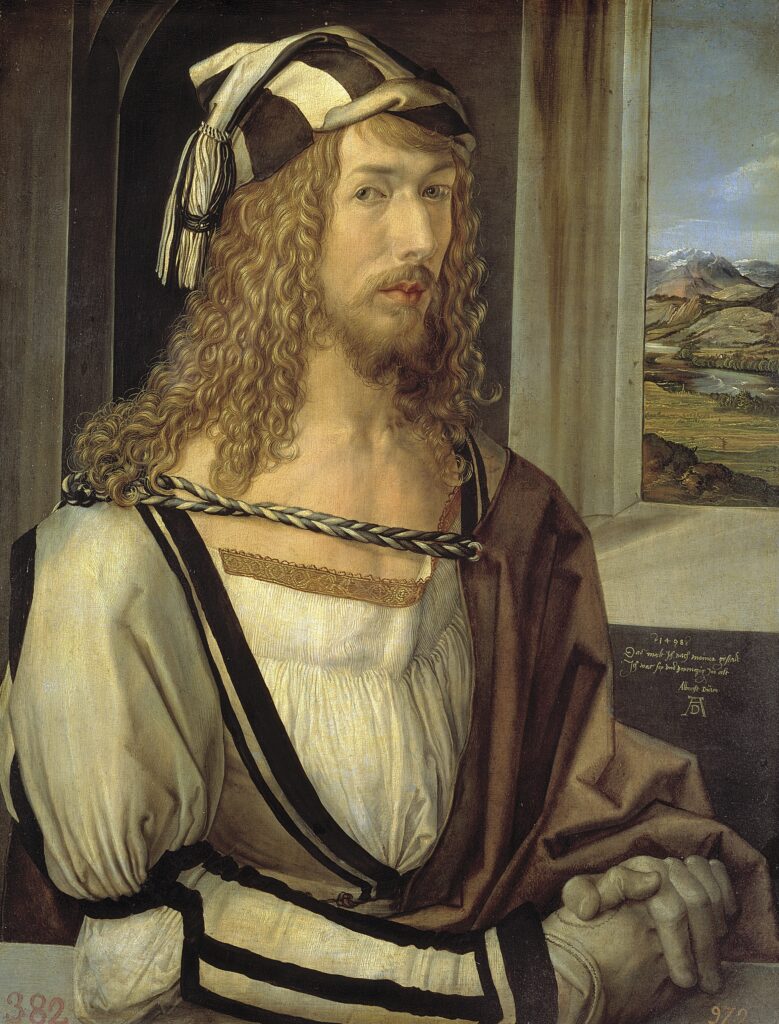
The artistic anchors of the Prado are Francisco Goya, Diego Velázquez, and El Greco.
But there are also masterpieces by Titian, Bosch, Fra Angelico, Hieronymous Bosch, Murillo, and Rubens. You can wander endlessly, in awe, through room after room full of beautiful paintings.
The must see masterpieces include:
- Bosch’s Garden of Earthly Delights
- Fra Angelicos’ Annunciation
- Albrecht Dürer’s Self-Portrait
- Velazquez’ Las Meninas
- Goya’s The Family of Charles IV
- Goya’s Clothed and Nude Majas
- Goya’s The Third of May
- El Greco’s Nobleman with his Hand on his Chest
- Ribera’s The Bearded Lady
- Rogier van der Weyden’s Descent from the Cross
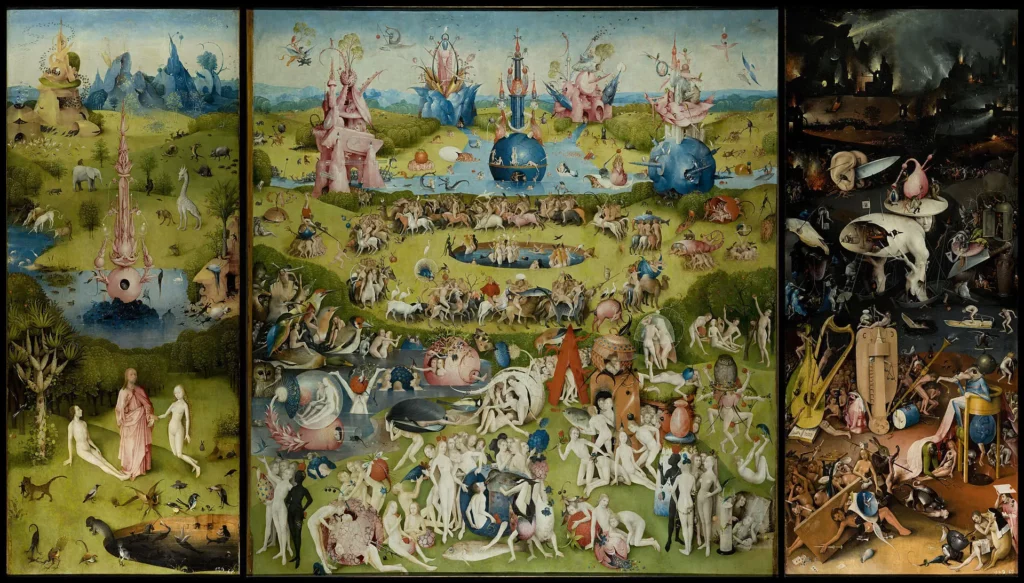
You should also see Goya’s Black Paintings. He painted these haunting works when he was depressed and deaf from syphilis.
Tips: The only place to buy tickets is the ground level of the Goya entrance. After securing your ticket, you enter through the Jeronimos entrance.
Lines can be incredibly long. To save time, I highly recommend booking a skip the line ticket in advance. But, be forewarned, that you will still have to wait in a line to get through the airport-style security.
Because there are so many masterpieces, you may also want to book a guided tour. It’s simply impossible to see everything on one visit.
Reina Sofia
Home to Picasso’s Guernica, the Reina Sofia is one of the best and most popular museums in Madrid. Its collection shows the development of Modernism from the late 19th century until today.
The focus is on 20th century artists — Picasso, Miro, Dali. But you’ll also find splendid pieces by Kandinsky, Joan Miró, Magritte, and other giants of modern art.
You’ll want to focus your efforts on level 2, where the stars of the permanent collection are held. You’ll find Modernist, Cubist, and Surrealistic works.
Guernica is the pièce de résistance. It’s not only an art piece, but a piece of history. It depicts the horror of modern war in a modern style.
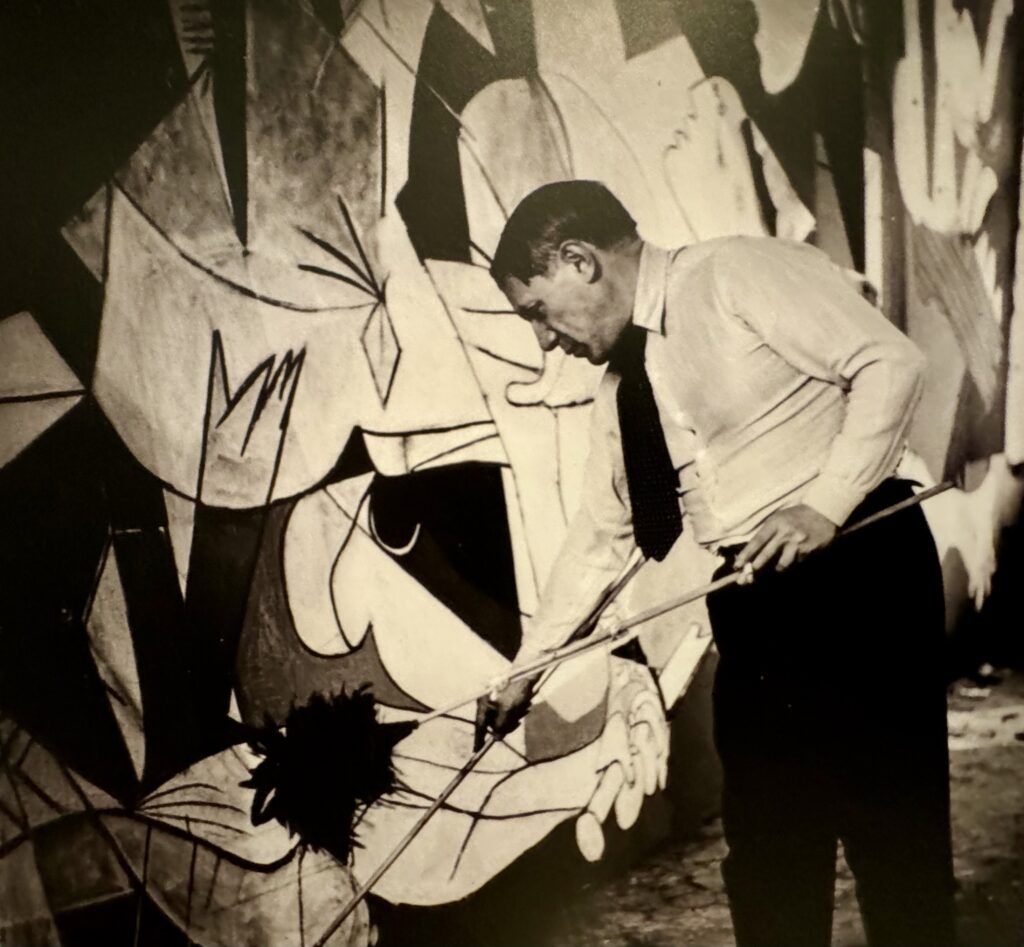
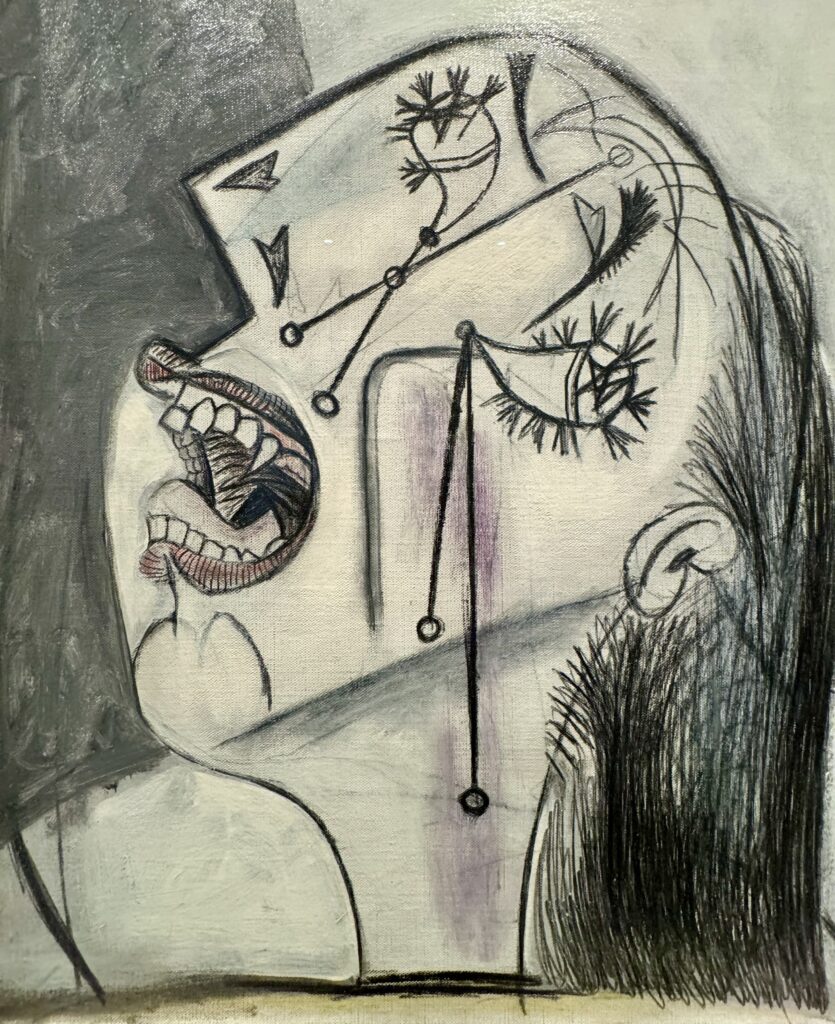
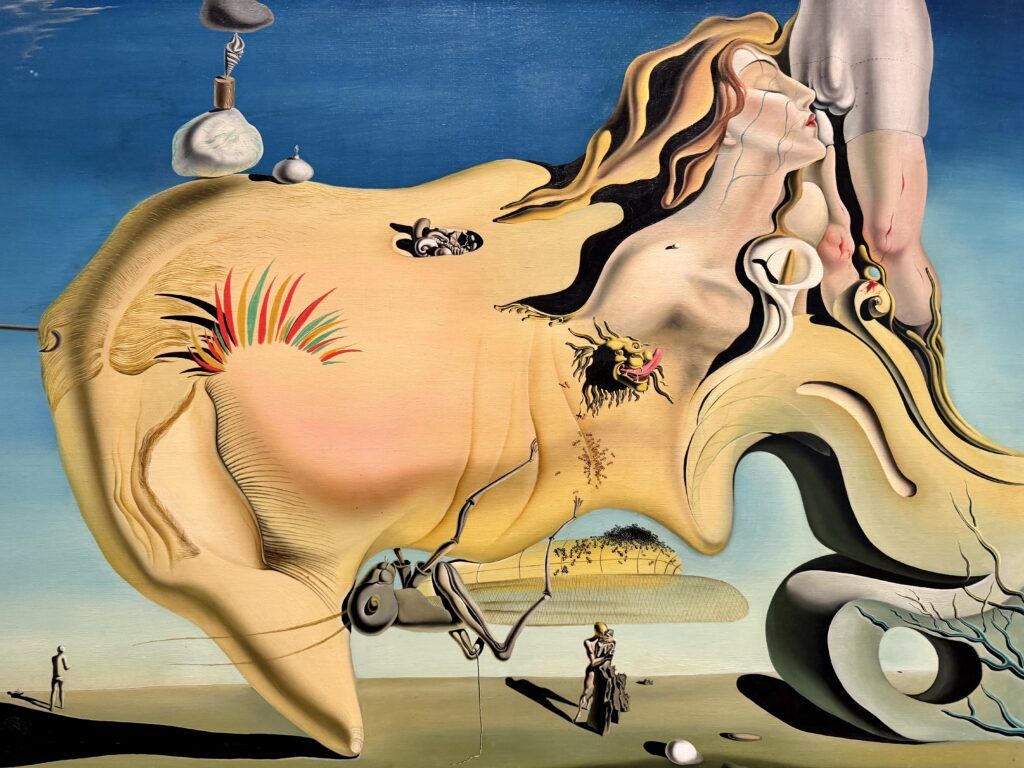
While it represents all wars, Picasso created the painting in response to the Spanish Civil War, specifically the 1937 Nazi bombing of the town of Guernica in northern Spain.
With its dark, chaotic subject matter, Guernica puts a human face on the collateral damage. The monochromatic colors, the symbol of tragedy and grieving, heighten the emotional impact.
Aside from this massive painting, in the same room, you can see photos of the work in progress, taken by Picasso’s paramour Dora Mara. You can also see studies Picasso made for the final work, which he completed in an astonishingly fast two weeks.
The other must see masterpieces in the museum are Dali’s Face of the Great Masturbator and Endless Enigma, Rene Magritte’s Pink Bells, Tattered Skies, and Miro’s Painting and Painting (the Red Spot).
>>> Click here to book a skip the line ticket
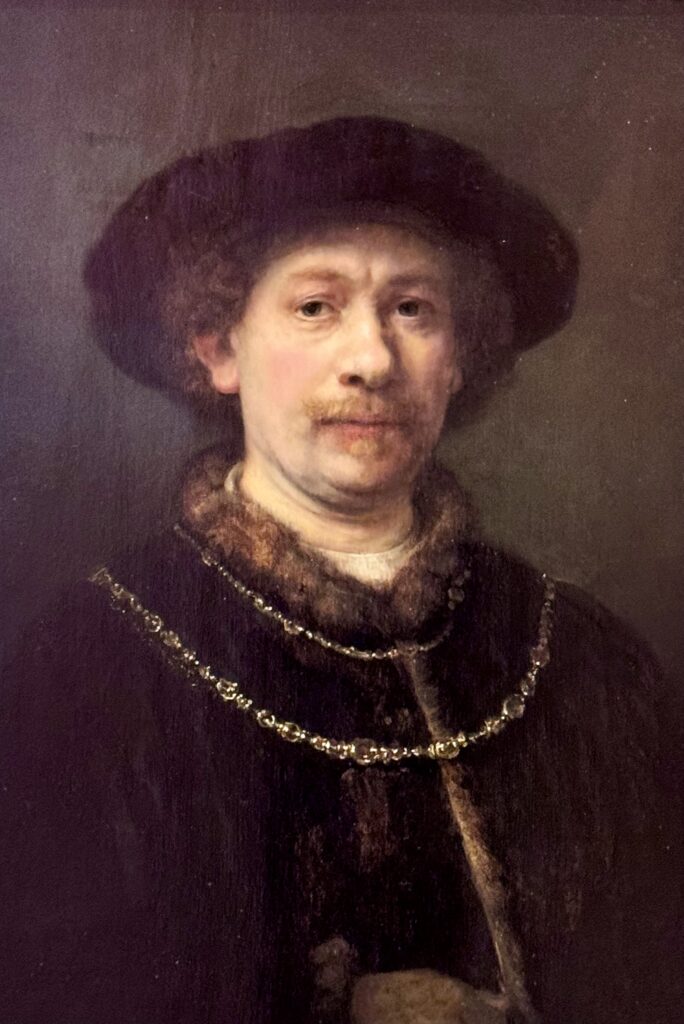
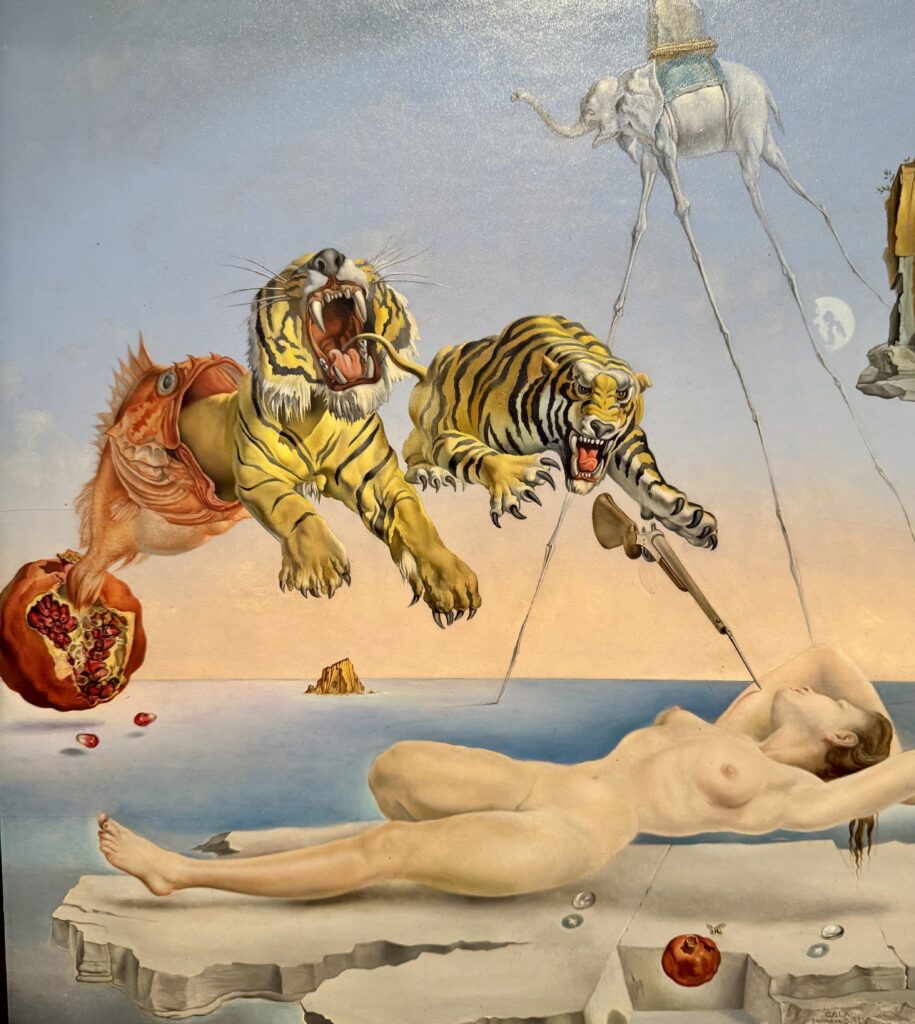
Thyssen-Bornemisza
The Thyssen-Bornemisza is an incredibly impressive private collection that Baron Thyssen sold to Spain for 350 million (a modest amount all things considered).
On a visit to this museum, you can enjoy the entire sweep of art history from early Italian Renaissance works to modern Pop Art. It has an especially good sampling of all the “isms” of the 20th century.
The permanent collection is displayed on three floors. The Carmen Thysen collection is on the ground floor and the Thyssen Collection is on the first and second floors.
The first floor gives you a survey of modernism. The second floor is where you’ll find old masters works from the 17th through the 19th centuries.
It’s a bit exhausting to do both on one visit. So you may want to pick the type of art you’re most interested in.
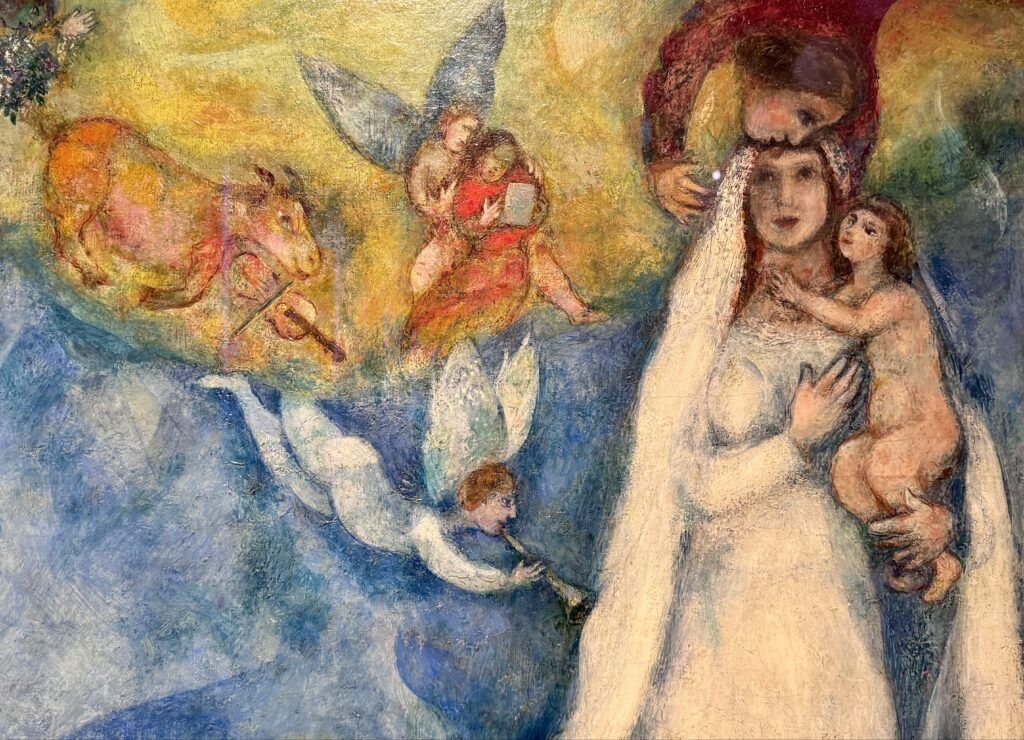
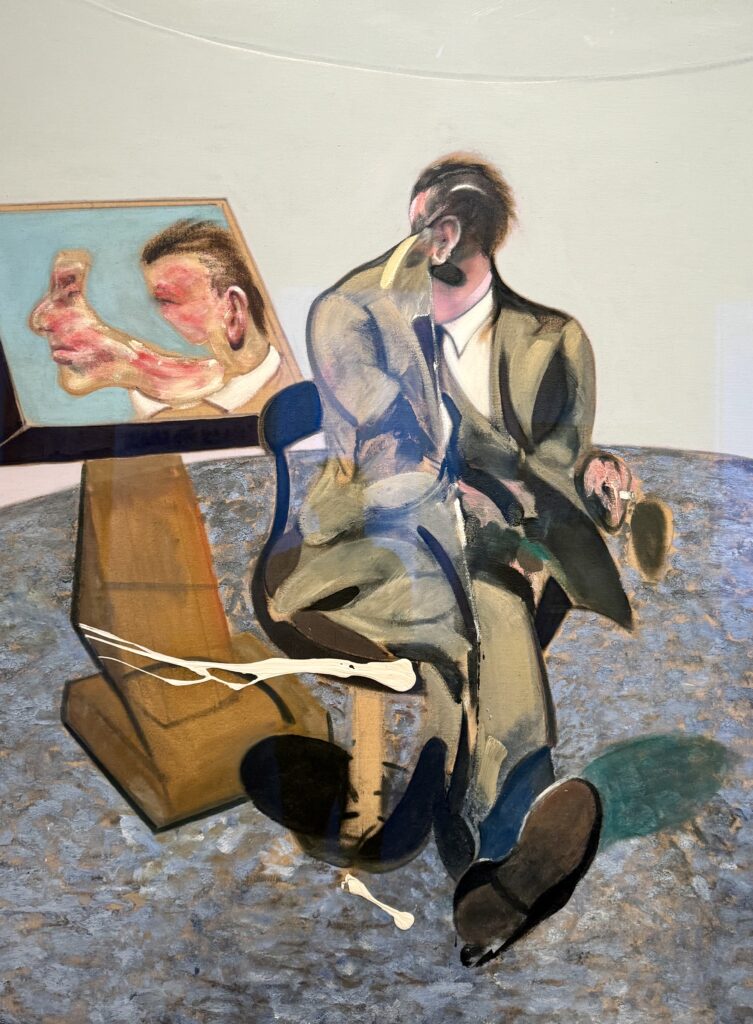
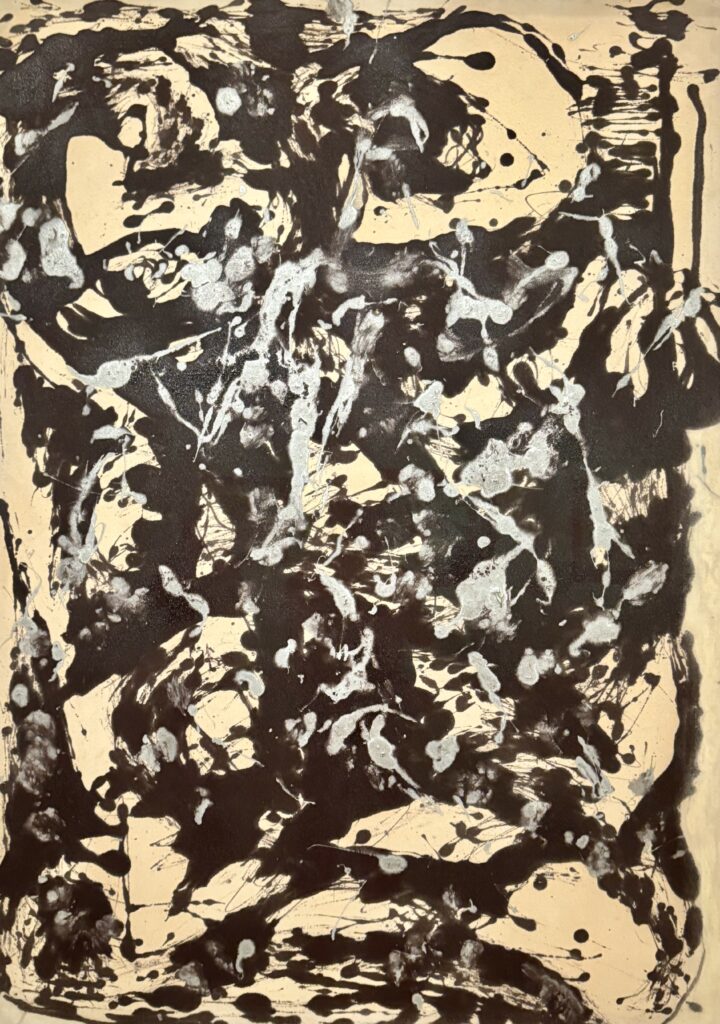
The first floor also displays the Impressionism and Post-Impressionism that the museum is famous for. There are works by Manet, Monet, Degas, and Van Gogh.
But you’ll also find luminous works by the Fauves, the Blue Riders, German Expressionists, the Abstract Expressionists, and Pop Artists.
Artists represented include Mark Rothko, Picasso, Dali, Miro, Lucien Freud, Marc Chagall, and Francis Bacon. I enjoyed theses works the most.
On the second floor, look for Holbein’s Henry VIII, Caravaggio’s Saint Catherine of Alexandria, Canaletto’s views of Venice, and a self portrait by Rembrandt.
>>> Click here to book a guided tour of the Thyssen
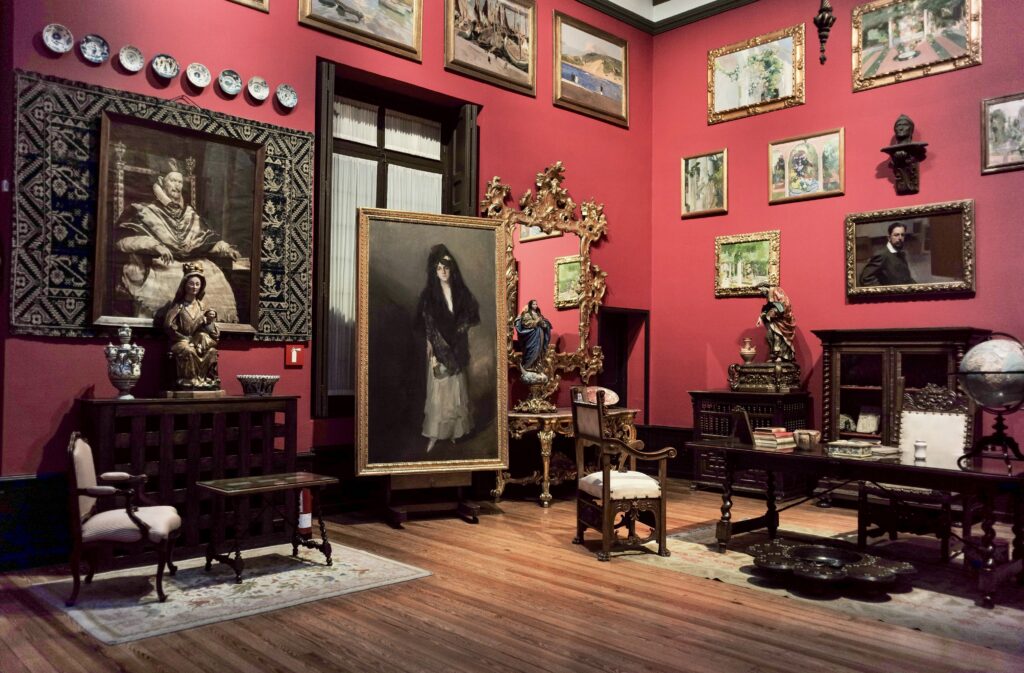
Sorolla Museum
Joaquín Sorolla was a Spanish painter and late Impressionist, a period called Luminism in Spain.
Sorolla is celebrated for his portraits, landscapes, and dexterity in portraying light and movement in a manner almost unparalleled among his contemporaries.
His titular museum is in his home, where he lived from 1911-23. I always find house museums to be very personal and revelatory.
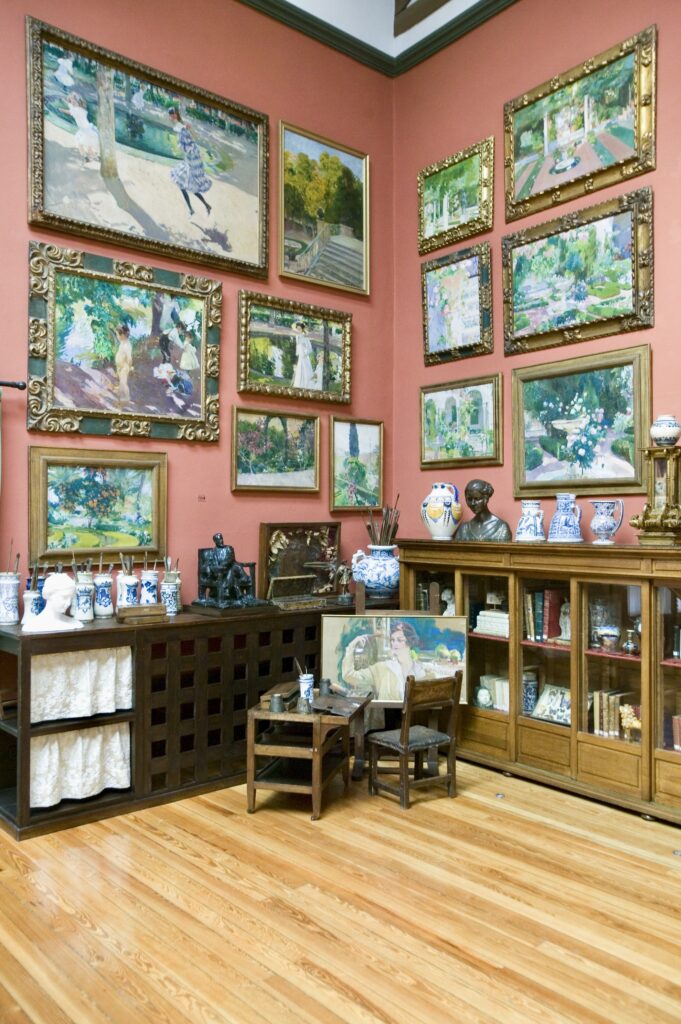
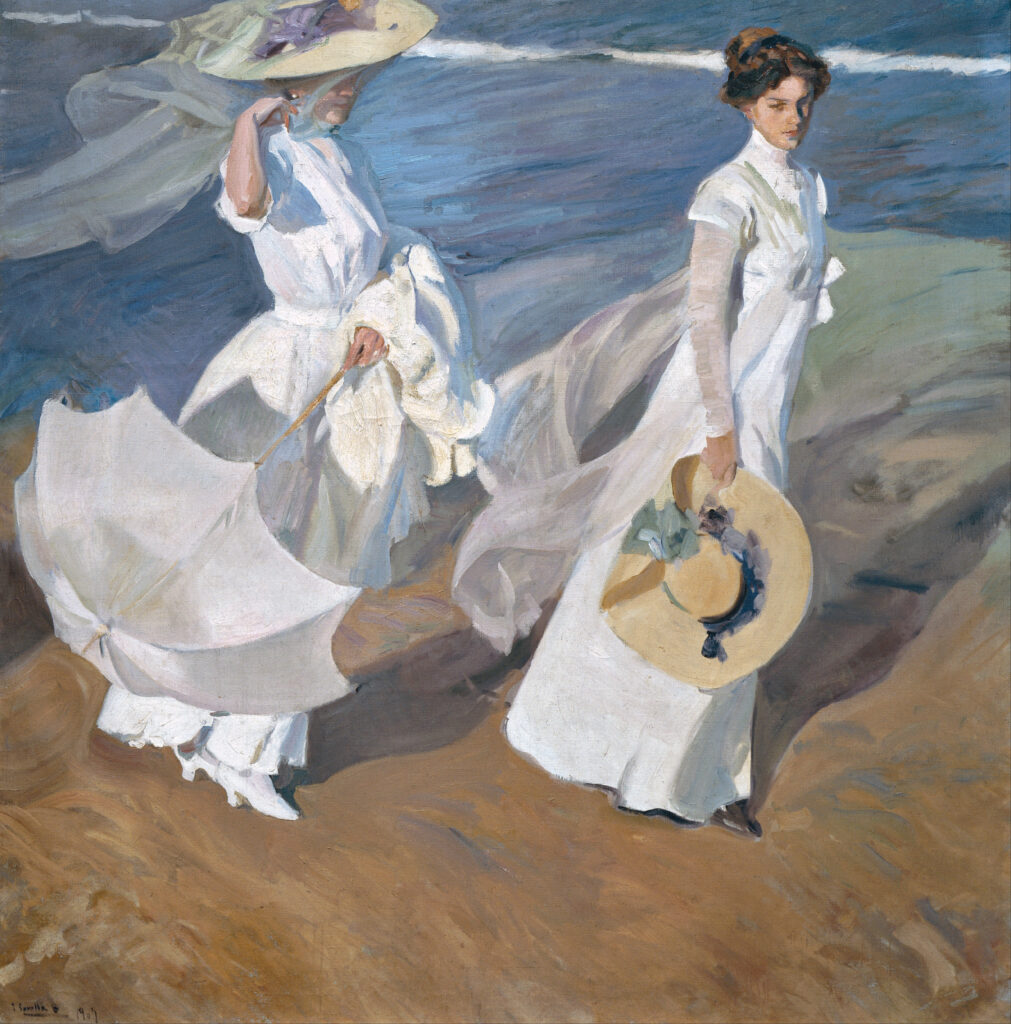
There is an extensive collection of Sorolla’s works, including oil paintings, sketches, and drawings, along with his personal belongings.
With an audio guide, you can stroll through his home and studio, zeroing in on whatever paintings grabs you.
You’ll see slices of the artists’s life — portraits of his wife, his family, and beach scenes.
You can top off your visit with a stroll through the Andalusian gardens. There’s a patio with a tiled fountain and soaring palm trees.
The gardens were designed by Sorolla himself. They reminded me of the Royal Alcazar in Seville.
Royal Palace
As far as palaces go, Madrid’s Royal Palace is a doozy. Its sumptuous interior rivals Versailles, minus a Hall of Mirrors.
The palace is ridiculously oversized. Estimates of the number of rooms range from 2,800 to 3,400. (My guide told me 3,418.)
The finest 18th century artists and craftsmen came to Madrid to adorn the palace’s every surface in frescoes, silk damask, and an immense amount of gold leaf.
The royal family currently resides in the more modest Palace of Zarzuela. But the Royal Palace is still used for state ceremonies and official banquets.
You can ogle luxurious tapestries, a king’s ransom in chandeliers, porcelain, decorative arts, armor, the crown jewels, and several Goya and Tiepolo artworks.
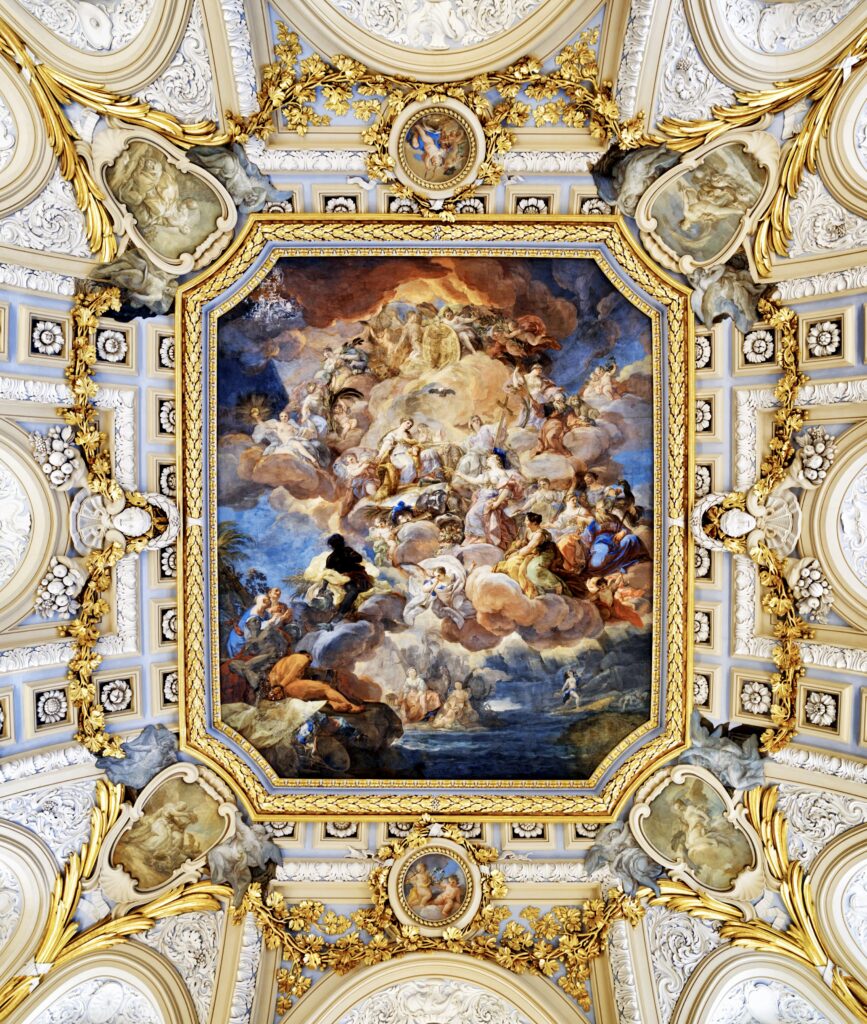
You’ll walk into the palace lobby and ascend the grand staircase. You can visit a succession of 17-18 rooms.
The most impressive room is the Throne Room.
The room is adorned with luxurious tapestries, frescoes, and a magnificent ceiling fresco painted by Tiepolo (with Christopher Columbus in sexy leggings). Velasquez brought the two black marble sculptures representing gods back from Italy.
Another important room is the Crown Room, which holds the instruments of power. I also loved the Gasparini Room (a triumph of Rococo) and the Porcelain Room (a lavish room paneled in green-white-gold porcelain).
You’ll definitely want to book a skip the line ticket because the lines are horrendous. You can also book a guided tour to get more details and the whole historical backdrop.
Tip: Except for the courtyard and the first two rooms, photos are banned in the Royal Palace and the guards are vigilant in enforcing that rule.
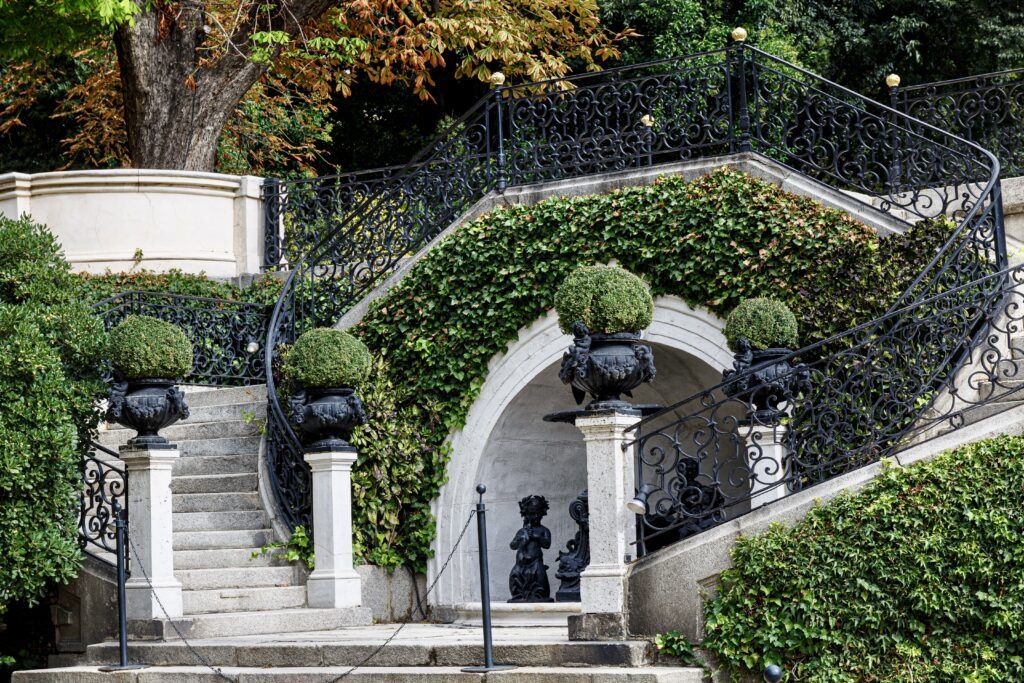
Liria Palace
This is an absolute hidden gem! It’s perhaps my favorite museum in Madrid just for the sheer joy of the experience.
Liria Palace is the luxurious 18th century home of the Dukes of Alba. The palace is set in a tranquil garden just steps from the bustling Plaza de España.
Opened to the public in 2019, it’s an intimate space filled with family photos, knickknacks, and exquisite period furnishings.
But the reason to visit is the Alba’s glorious collection of art! It’s like you’re in a mini Prado, but with none of the maddening crowds.
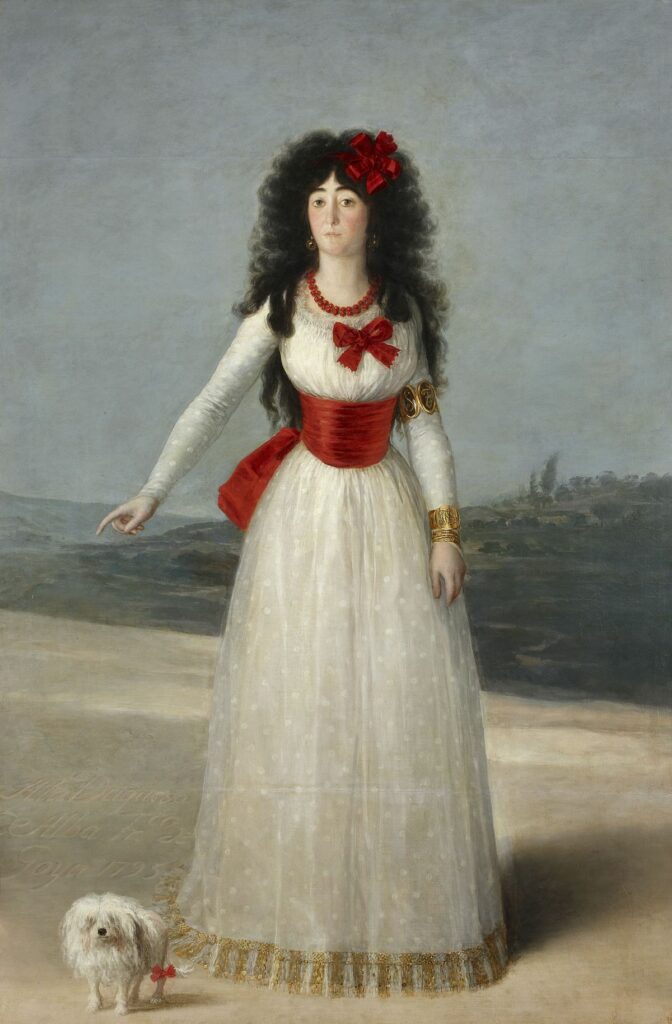
The collection includes artworks by great masters like Goya, Velázquez, Murillo, Zurbarán, Rubens, El Greco, Ribera, Rubens, Titian, Jan Brueghel the Elder, and Winterhalter — all artists favored by the Spanish court.
During your visit, you can admire a succession of rooms. My favorite rooms were:
- the Spanish Room (Velázquez, Zurbarán and Ribera)
- the Flemish Room (Rubens, Jan Brueghel the Elder and Jacob van Ruisdael)
- the Italian Room (Perugino, Titian, Guercino)
- the Goya Room (several Goyas).
The Goya Room is home to what is probably the Liria’s foremost masterpieces — Goya’s Duchess of Alba, the White Duchess from 1795.
>>> Click here to pre-book a guided tour
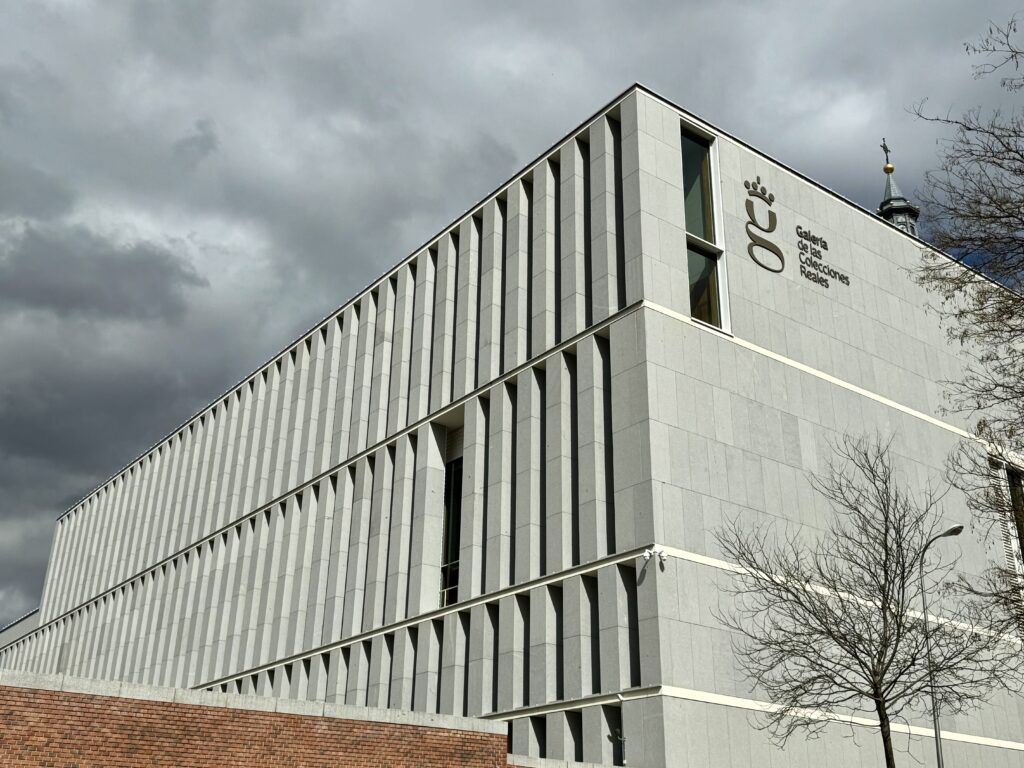
Royal Collections Gallery
The Royal Collections Gallery is a brand new museum in Madrid that opened in July 2023. It was decades in the making. I was super excited to visit!
National Geogarphic listed the museum as an outstanding “cultural attraction” in its annual “Best of the World” list for the year 2024. It’s a modern mecca for old world art lovers.
The Modernist building was designed by Emilio Tuñón and Luis Moreno Mansilla. Work began in 2006, but was repeatedly stalled by the discovery of archaeological remains and the pandemic.
The RCG has a collection similar to the Royal Palace, but with better art and fewer crowds. From what I could tell, I was the only English speaking person there, so the new museum is still a hidden gem.
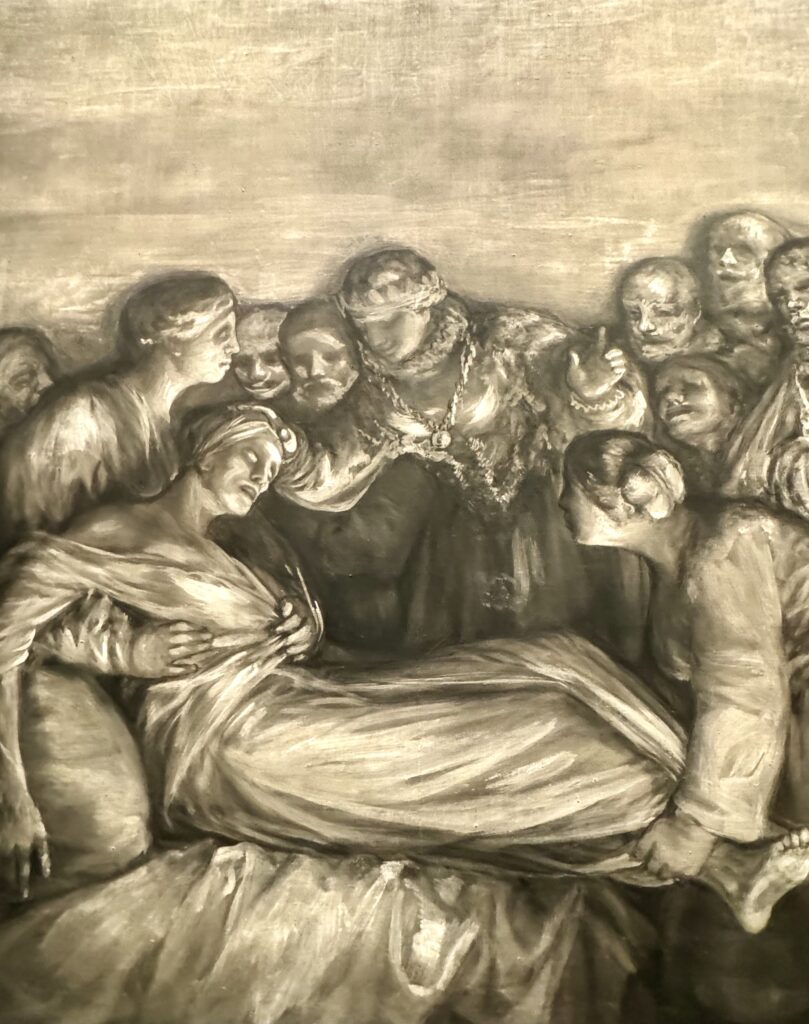
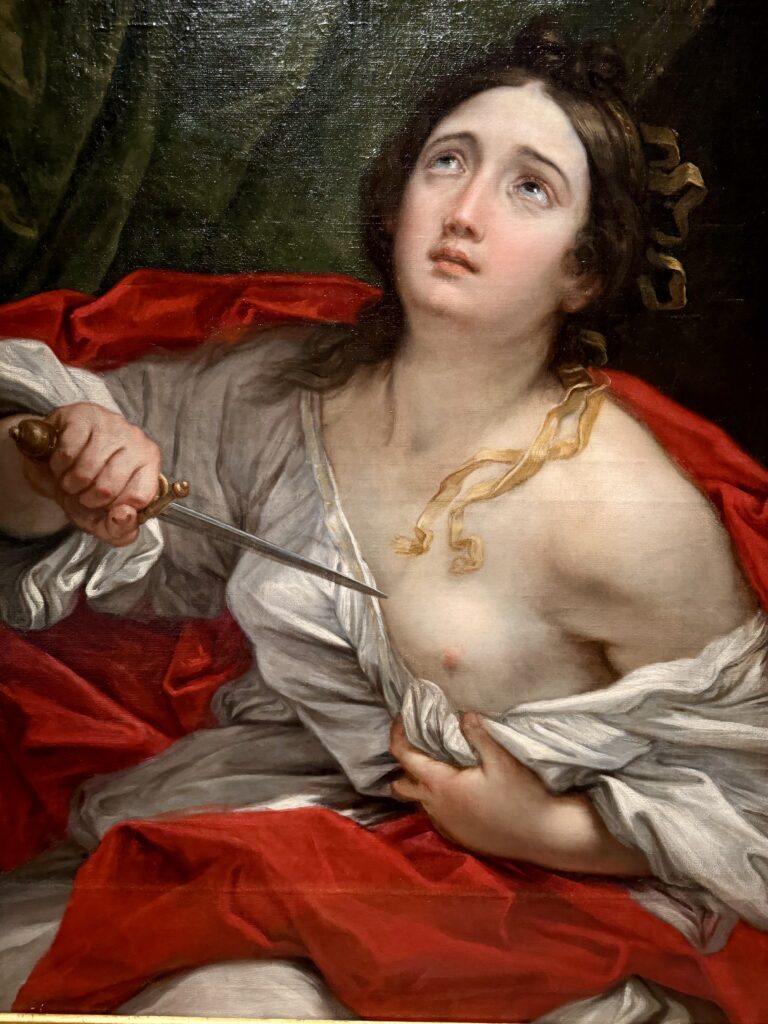
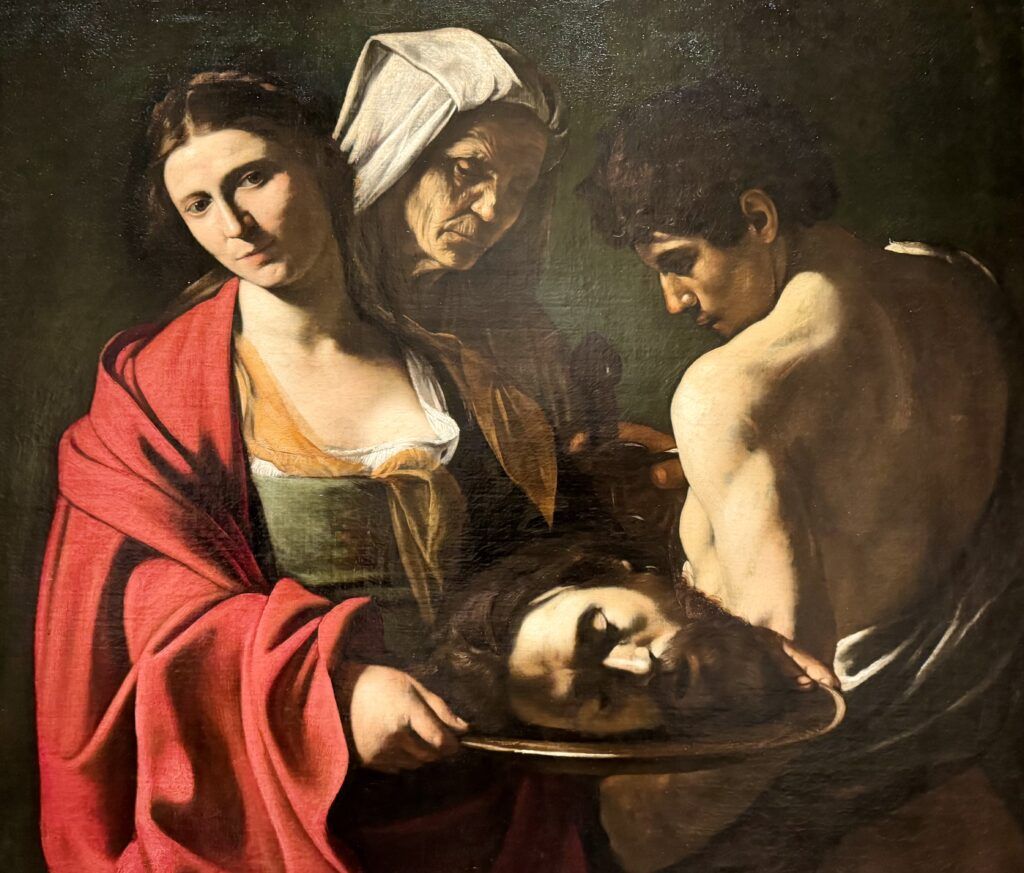
The museum houses the collections of the Spanish monarches. Through hundred of artworks and artifacts, the museum tells the story of a 500 years of imperial Spain and its artistic patronage.
The exhibits were hand picked from around Spain and are arranged in chronological order. They come from 19 royal palaces and 10 monasteries that are under Patrimonio Nacional’s stewardship.
The museum is divided into three levels — one for Bourbon treasures, one of Hapsburg treasures, and one for temporary exhibitions. The exhibition halls are gigantic and you access then through long stone ramps.
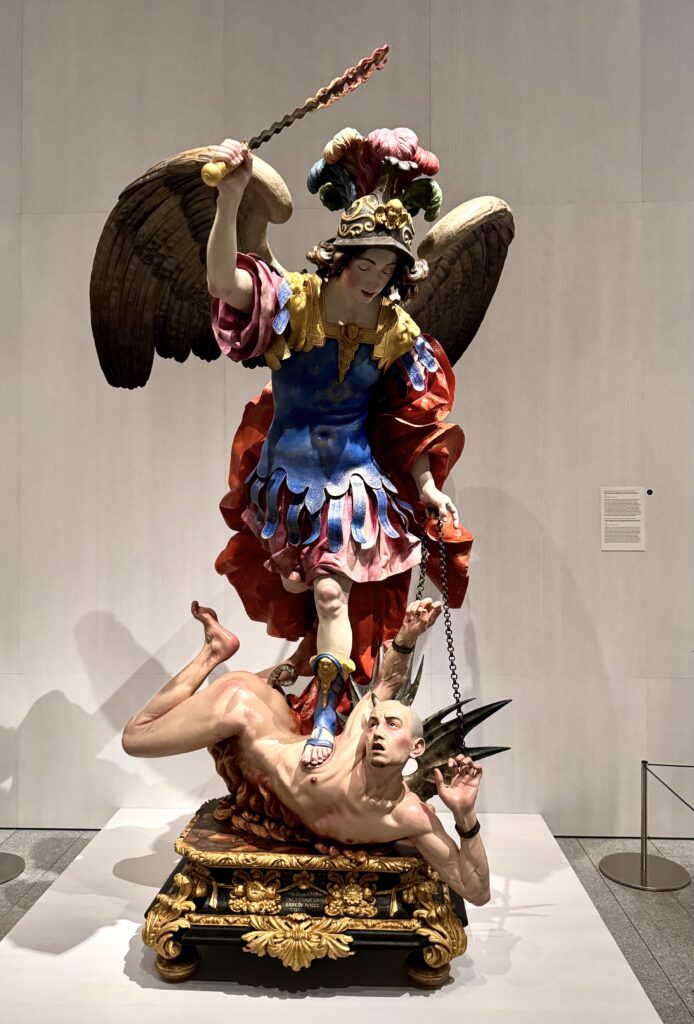
You’ll see scads of decorative objects, paintings, tapestries, porcelain, royal carriages, and rugs.
The stars of the collection are: Caravaggio’s Salome With the Head of John the Baptist, El Greco’s Adoration of the Name of Jesus, Velazquez’ Philip IV, Luisa Roldán’s Saint Michael’s Archangel Vanquishing the Devil, works by Goya, and tapestries based on cartoons by Raphael and Bosch.
Tip: I had a bit of a difficult time finding the museum. But it combines well with a visit to Almudena Cathedral. The museums is to the right of the church’s front facade. It’s set back, so you can’t see it right away.
>>> Click here to book a guided tour of RCG
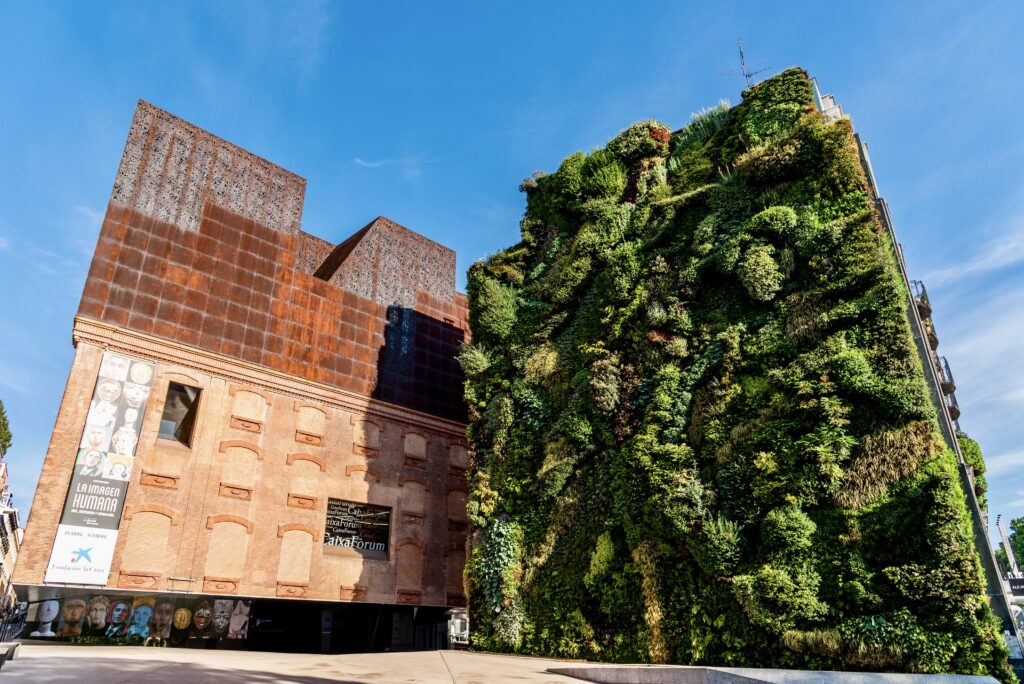
Caixa Forum
The Caixa Forum is right across the street from the Prado, and it’s well worth a visit.
It’s a contemporary museum and cultural center, designed by the renowned Swiss architectural firm Herzog & de Meuron. The project, completed in 2007, is a notable example of modern architecture and adaptive reuse.
The architects transformed an old electrical power station, the Central Eléctrica del Mediodía, into this striking cultural space.
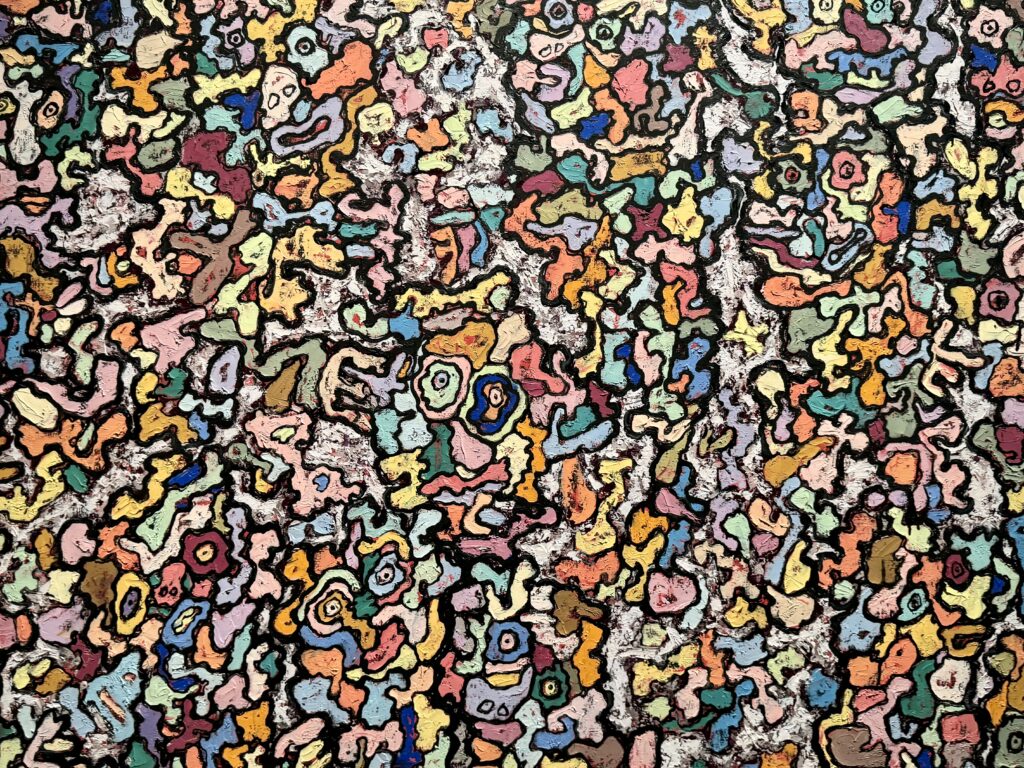
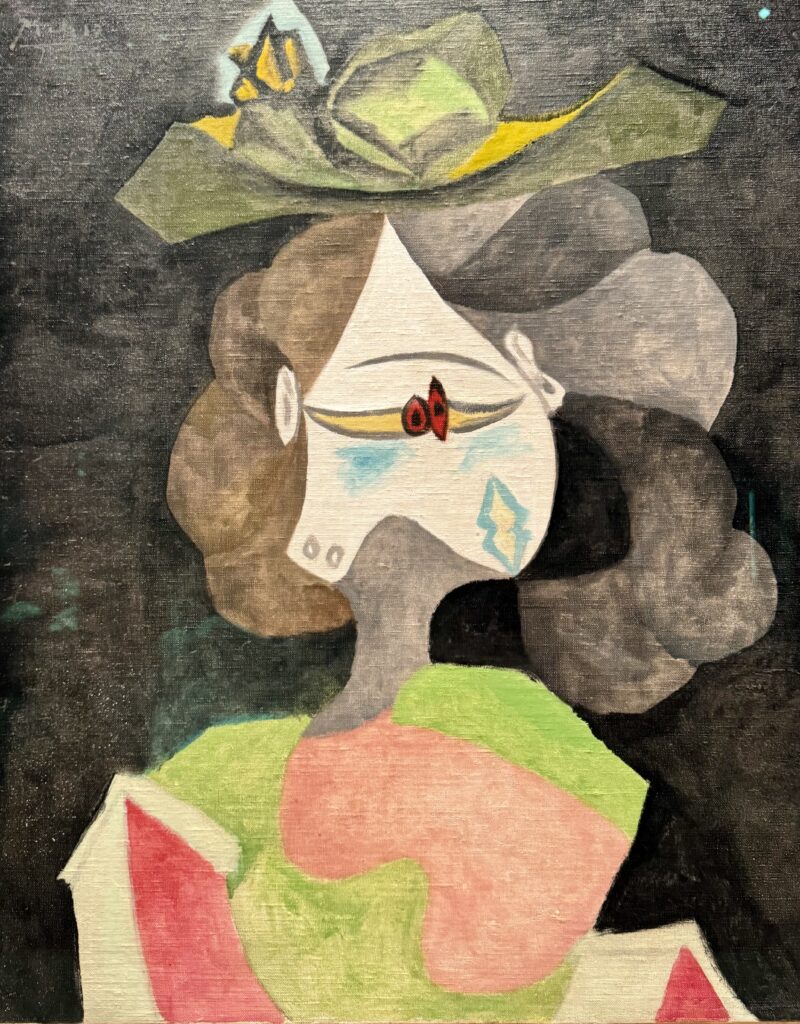
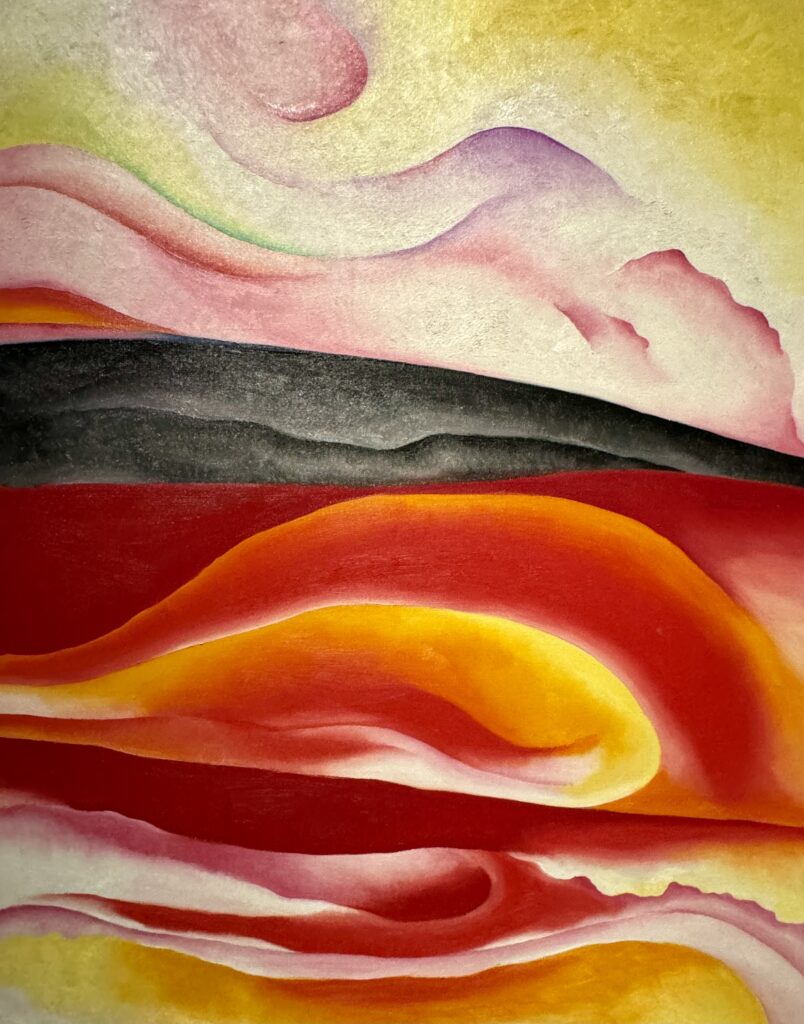
It maintained the historical facade while adding modern elements, including a distinctive rusted cast-iron addition, a crown really, that appears to float above the ground.
Echoing the greenery across the roadie the Real Jardin Botanico, it displays a vertical garden rising almost 80 feet and counting 15,000 plants of 250 different species. It’s the work of French botanist Patrick Blanc.
Inside, you’ll find ever-changing world class temporary art exhibitions in airy galleries. When I visited, there was an exhibition on Biomorphism and nature, a joint exhibition with Paris’ Centre Pompidou.
The exhibitions are on second and third floor. The ground floor has a nice gift shop. Lecture rooms and an auditorium are on the underground levels.
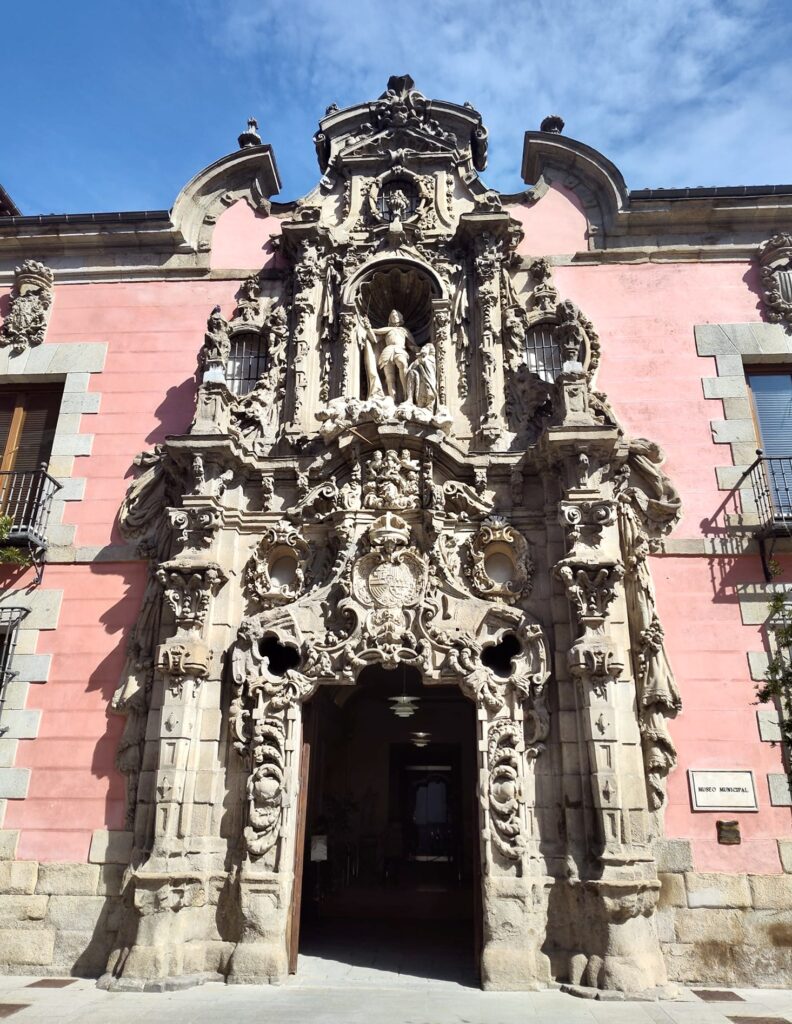
History Museum
Madrid’s History Museum is housed in an exquisite Baroque building that previously functioned as the San Fernando Hospice.
The museum gives you an overview of the city’s development, culture, and traditions from the time it became the Spanish capital in 1561 up to the modern era.
Following an extensive renovation, the museum reopened in 2014. It showcases a diverse and rich collection of 60,000 items that shed light on Madrid’s historical narrative.
The collection is spread over 4 floors. It includes paintings, engravings, maps, scale models, sketches, photographs, postcards, sculptures, porcelain pieces, silverware, fans, furniture, armaments, and a selection of coins and medals.
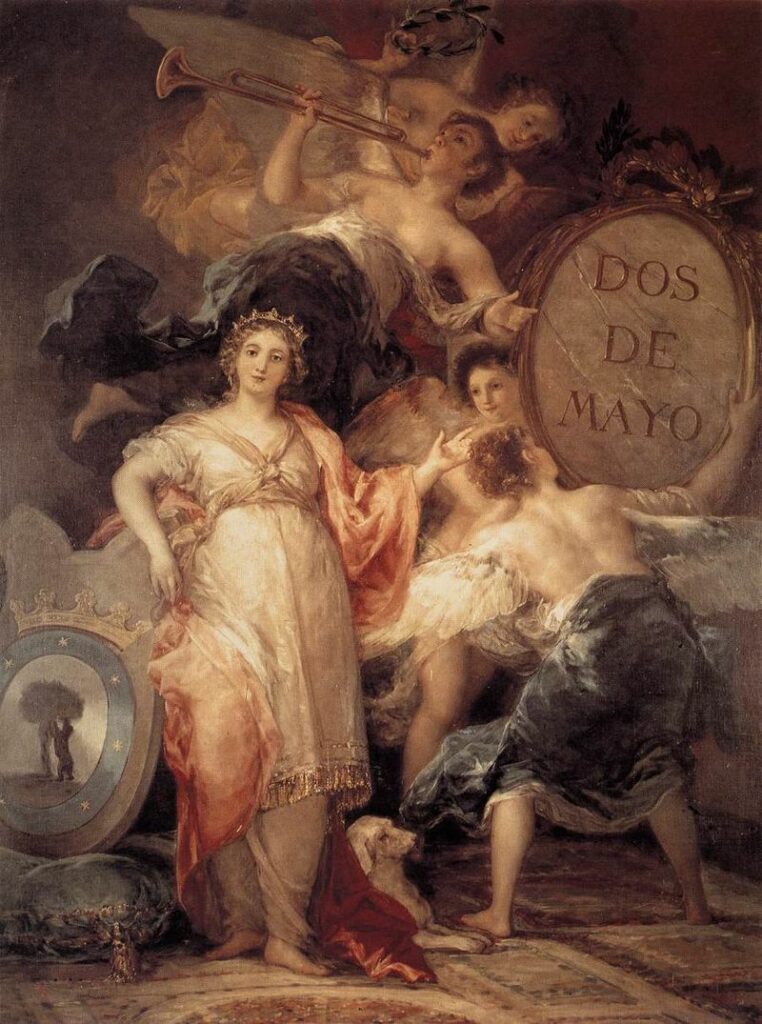
The exhibition offers museum-goers a chance to encounter remarkable pieces that illustrate the city’s past and cultural heritage.
Among the noteworthy items are a detailed 1830 scale model of Madrid by León Gil de Palacio, significant paintings like Allegory of the City of Madrid by Francisco de Goya, and Virgin with Saint Ferdinand by Luca Giordano.
The museum also features an impressive collection of Buen Retiro porcelain, a variety of historical maps, personal items from the household of Mesonero Romanos, pieces from Gutiérrez Solana’s studio, and a captivating collection of historical photographs.
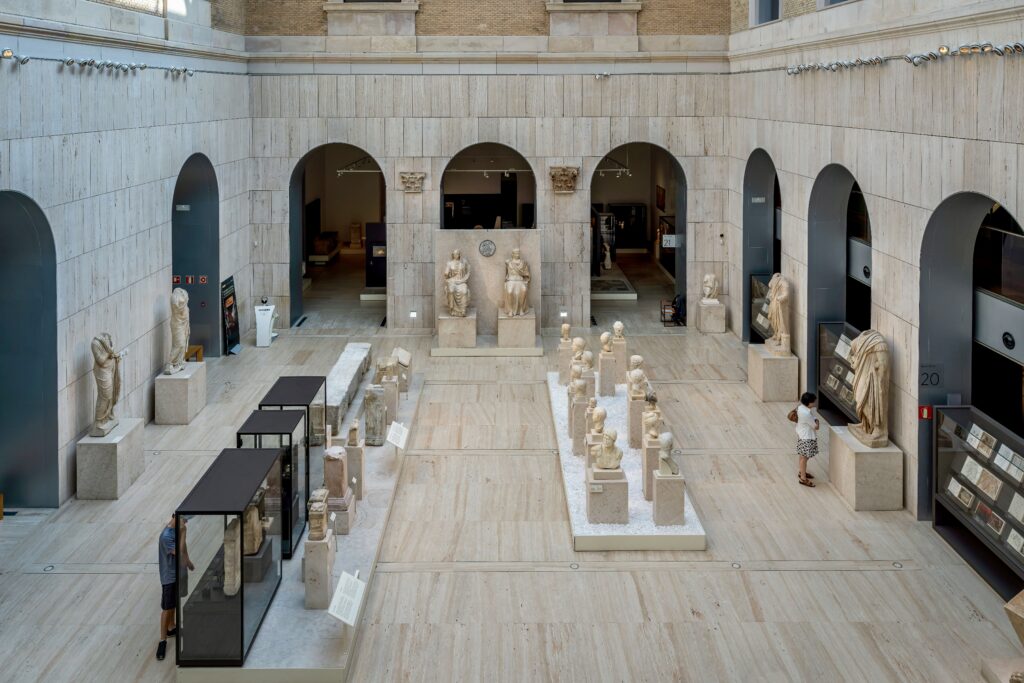
National Archaeological Museum
I must admit that I am an archaeological museum junkie. I always find them fascinating. And Madrid’s National Archaeological Museum doesn’t disappoint.
It’s a well-curated rich collection of artifacts and multimedia displays that tell the story of Iberia.
You follow a chronological walk through the wonders of each age: Celtic, Roman, Visigothic, Moorish, Romanesque, and beyond.
A highlight is the Lady of Elche Room, Room 13. It’s a prehistoric female bust and a symbol of Spanish archaeology.
Discovered in 1897, this stunning piece dates back to the 5th century BC, though some scholars argue about the exact dating and origin. The bust is notable for its intricate craftsmanship and the detailed depiction of her attire, headdress, and jewelry.
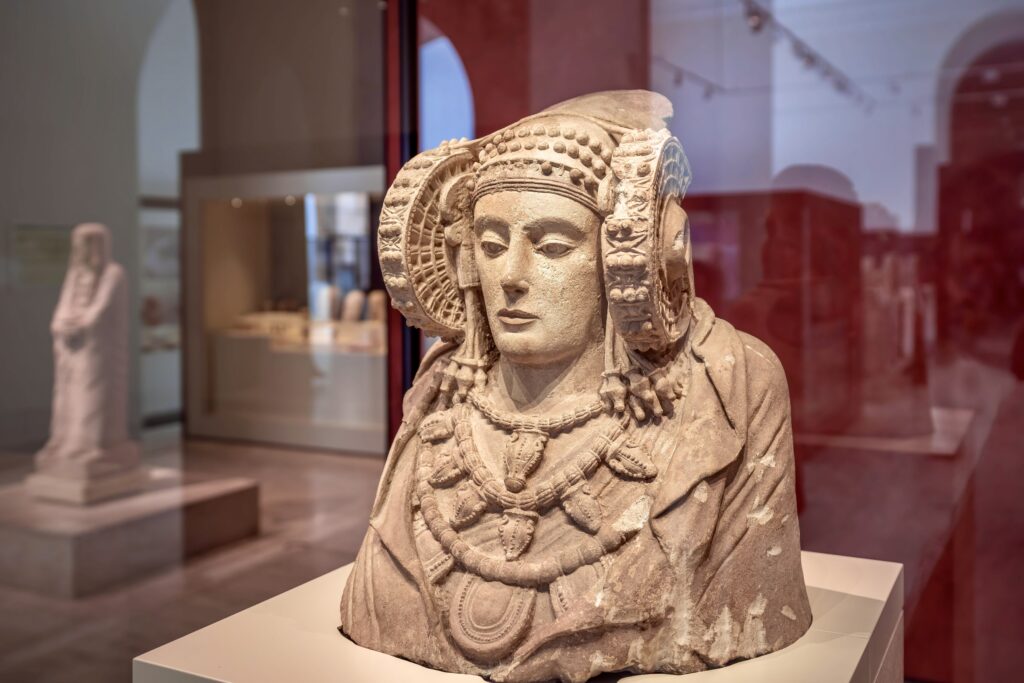
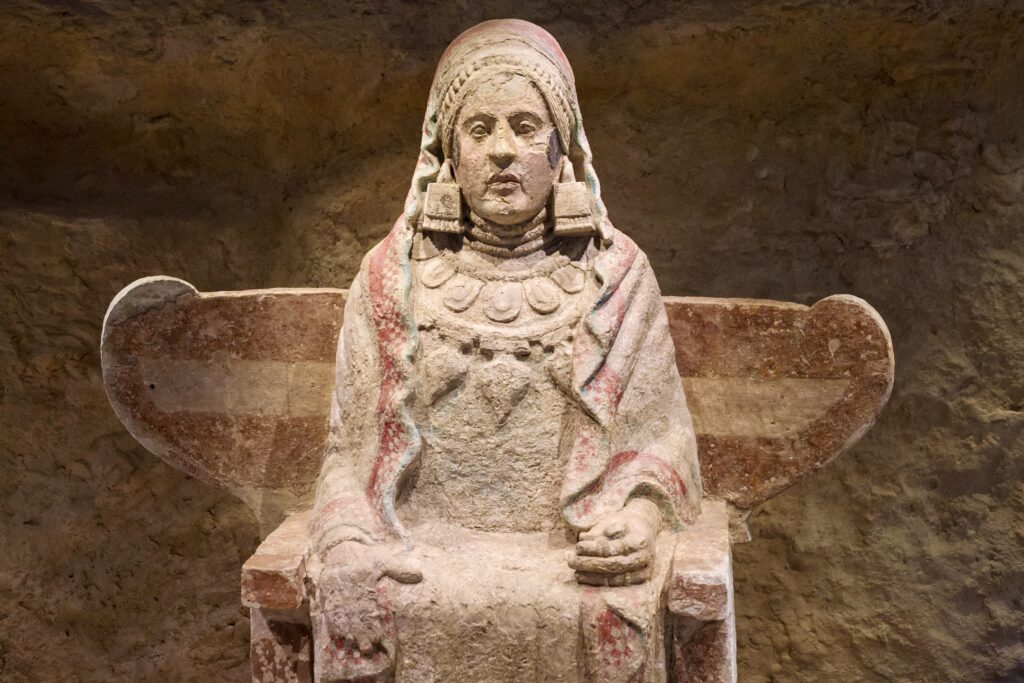
Another fine piece is the Lady of Baza. Discovered near Granada in 1971, this limestone statue depicts a seated female figure.
It’s a prominent example of the artistry of the Bastetani, an ancient civilization that inhabited the Iberian Peninsula before the Romans arrived.
It’s believed that the statue served as an urn for the ashes of the deceased. She sits on a throne with wings, dressed in elaborate attire, and accessorized with jewelry.
There are also some rather underwhelming replicas of artwork from the Altamira Caves.
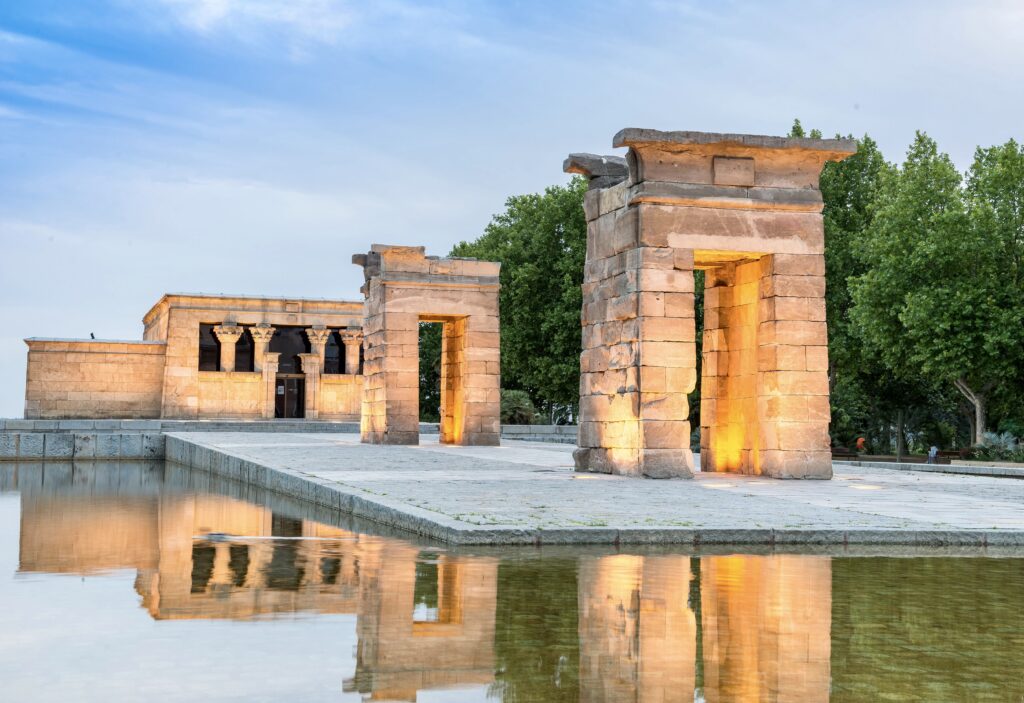
Temple of Debod
The Temple of Debod is the real deal. It’s a 2nd century BC Egyptian temple.
The Egyptian government gifted it to Spain in 1968. It was a token of gratitude for Spain’s assistance in saving the temples of Abu Simbel.
It’s the only place in Europe where you can actually wander through an intact original Egyptian temple.
The temple is in three pieces. There are two gate-like structures and the inner sanctuary dedicated to the goddess Isis.
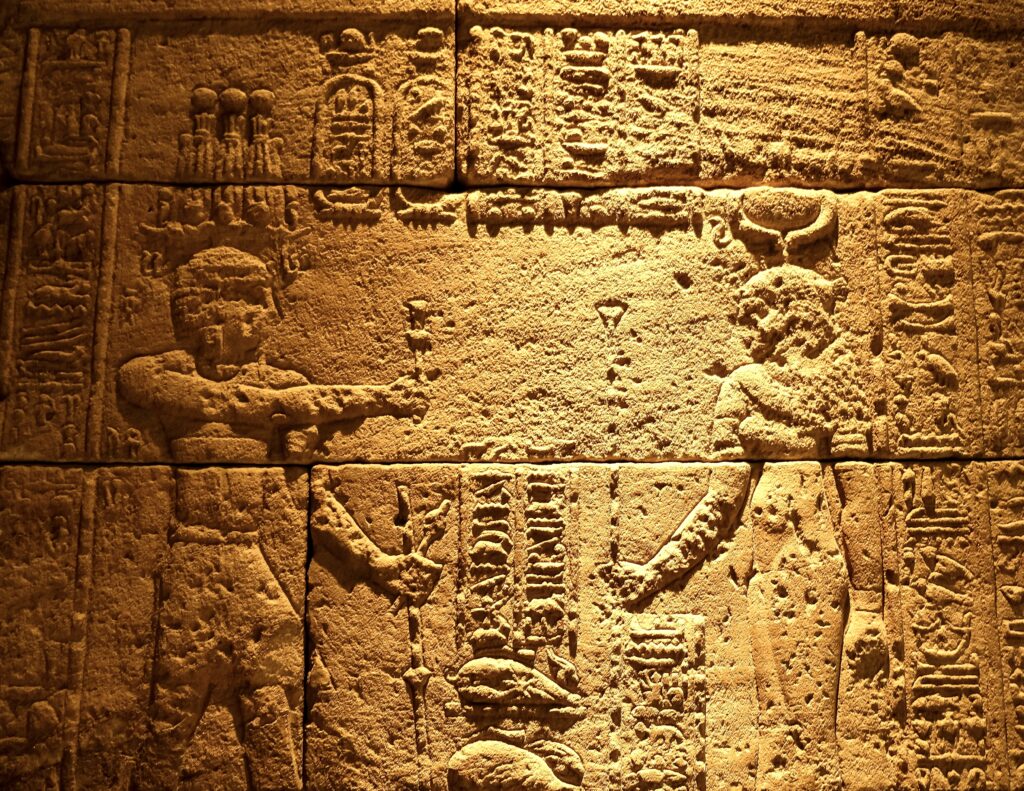
Inside, you’ll find an intricately carved hall, several chapels, and a small museum.
The temple is located Parque del Oeste. It’s a romantic place with beautiful gardens offering up great views of the city.
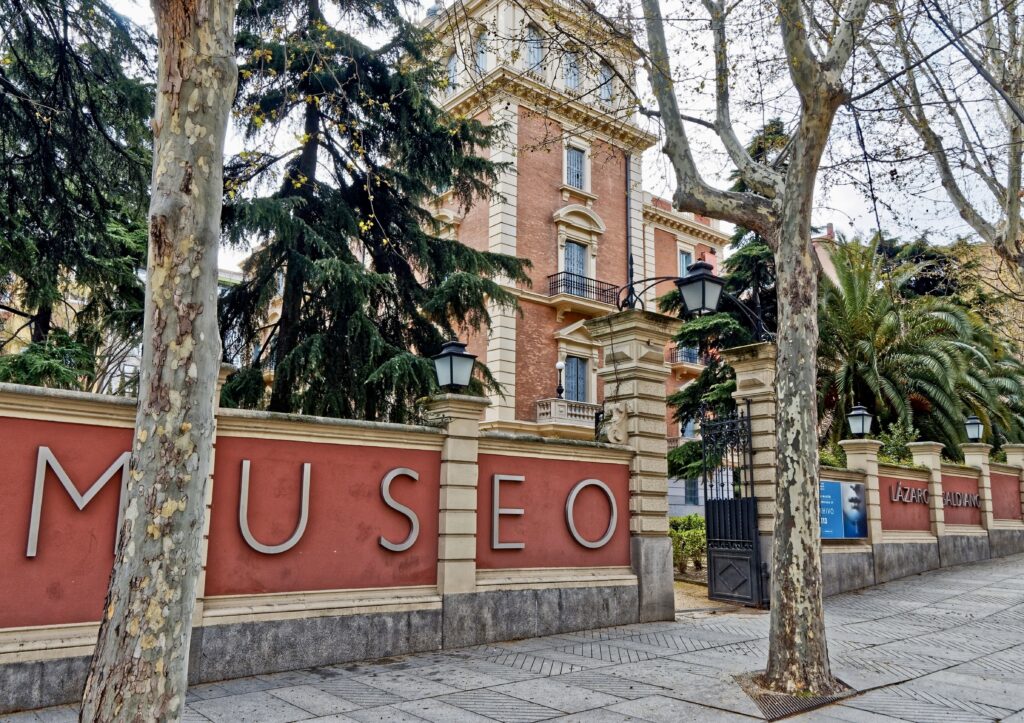
Lazaro Galdiano Museum
The Lázaro Galdiano Museum in Madrid is another quirky hidden gem among the city’s motherload of museums.
Located in the Salamanca district, this museum is housed in the former residence of José Lázaro Galdiano. He was a wealthy Spanish financier, publisher, and art collector who amassed an impressive collection of artworks and artifacts throughout his life.
Upon his death in 1947, he bequeathed his entire collection and the beautifully renovated mansion, known as Parque Florido, to the Spanish State.
The museum opened to the public in 1951 and showcases more than 12,000 items, though only a fraction is on display at any given time due to space constraints.
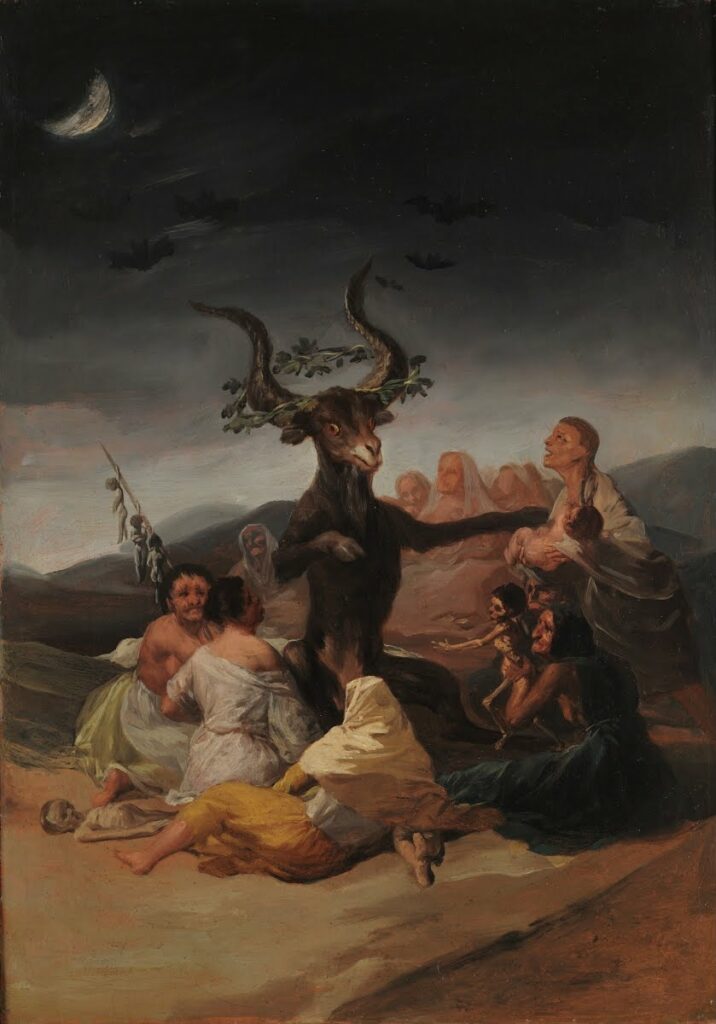
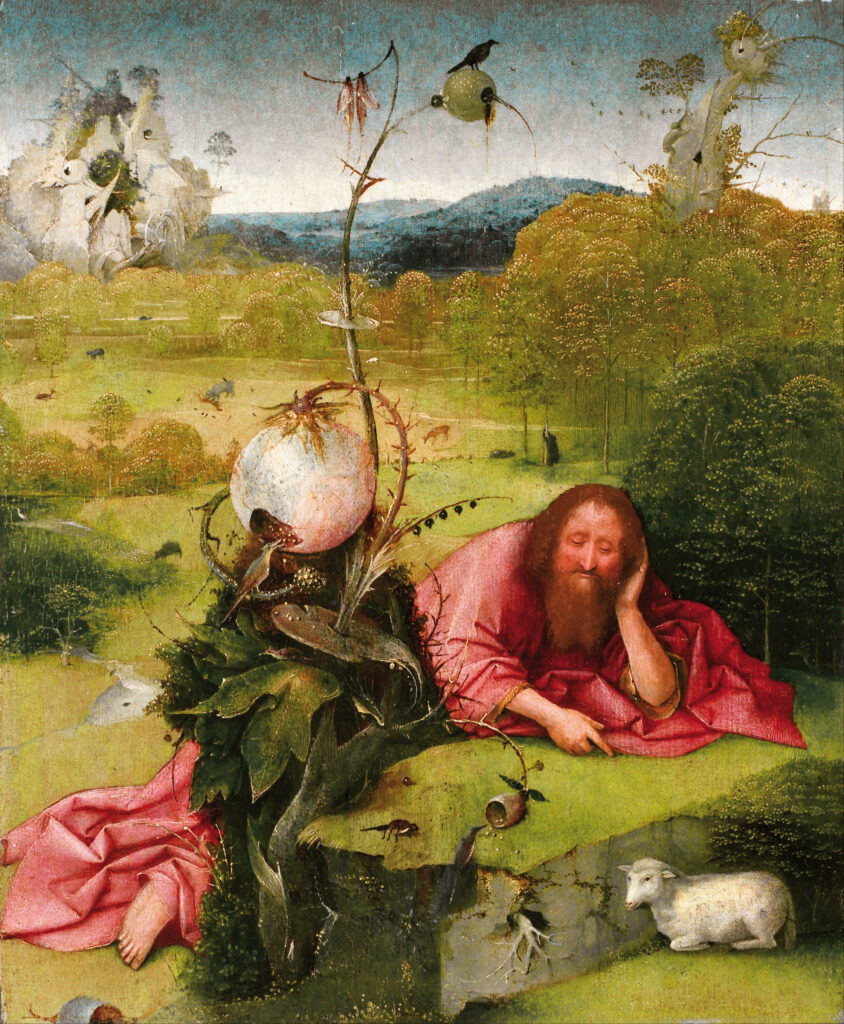
The collection spans the Middle Ages to the early 20th century. It includes paintings, sculptures, jewelry, ceramics, textiles, and decorative arts.
The museum is particularly renowned for its extensive collection of Spanish and European paintings, featuring works by renowned artists such as Francisco de Goya, El Greco, Hieronymus Bosch, and Velázquez, among others.
The true highlights are the Goya artworks, which include several important portraits and engravings. You’ll see animals, bullfights, witches, and selections from his famous series Los Caprichos and Los Disparates.
The museum also possesses a significant assortment of decorative arts, showcasing exquisite pieces of jewelry, glassware, and ceramics that reflect the breadth and depth of Lázaro Galdiano’s interests as a collector.
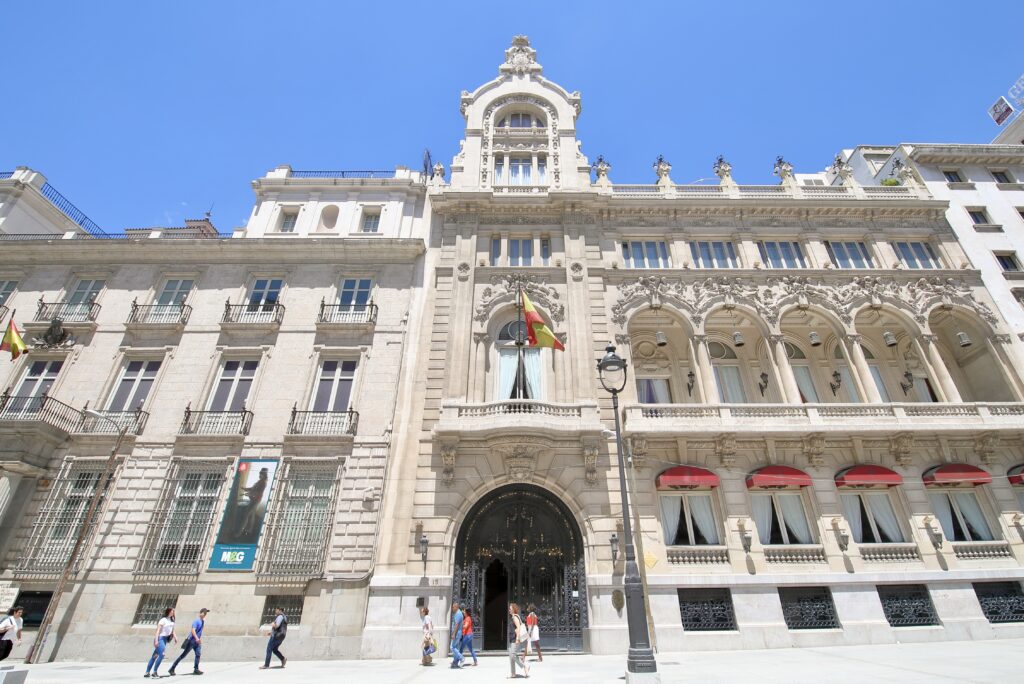
San Fernando Royal Academy of Fine Arts
Another hidden gem museum that art lovers will hard fall for is the Real Academia de Bellas Artes de San Fernando.
Despite being quite close to the Paseo de Prado, it’s rarely visited by most travelers.
The museum is housed over three floors in the grand rooms of the former Palacio Goyeneche. It houses a collection spanning five centuries of Spanish painting.
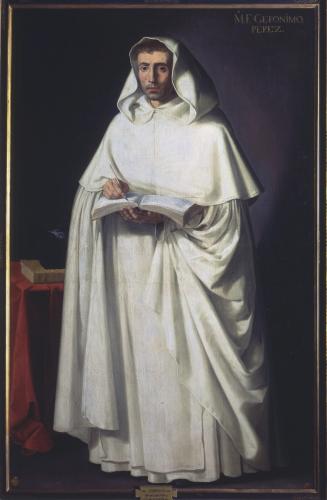

You’ll find 20 Picasso etchings, eight life size portraits of monks by Zurburan, and other works by Velázquez, Rubens, Van Dyck, El Greco, and Murillo.
Goya was an alumni and professor of the academy.
So, naturally, the museum possesses a significant number of the artist’s paintings and etchings. The one to look for is the Burial of the Sardine and his Self-Portrait.
The museums also displays sculpture and porcelain.
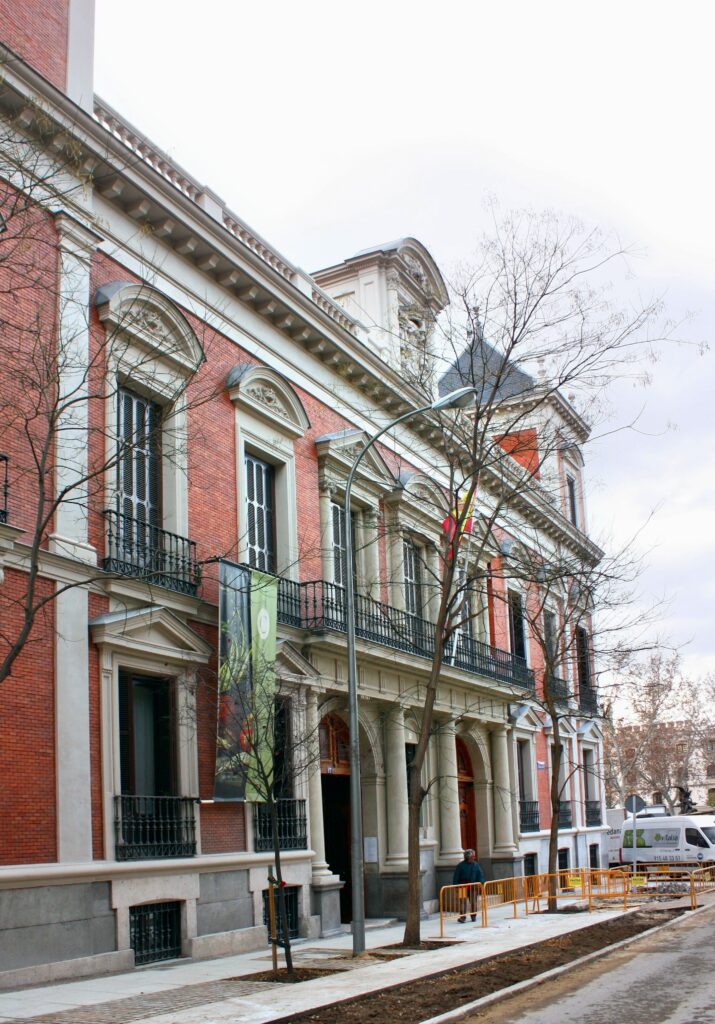
Cerralbo Museum
The Cerralbo is an important museum in Madrid, but no one knows it exists! In this quirky museum, you can travel back in time to turn of the century Spain. Plus, there are no camera police!
The museum was the home of Enrique de Aguilera y Gamboa, the 17th Marquis of Cerralbo. He was a fanatic collector (almost a hoarder), historian, archaeologist, and sometime politician. When the marquis died in 1922, he bequeathed everything to the state.
The museum comes complete with gaudy period furnishings, some seeming to channel Game of Thrones. It’s a fantasia of maximalist decor, a feast for the eyes. No space is left empty.
You walk up a grand staircase with illusionistic marble and frescos. The piano nobile is quite smashing, including a gala dining room and ballroom.
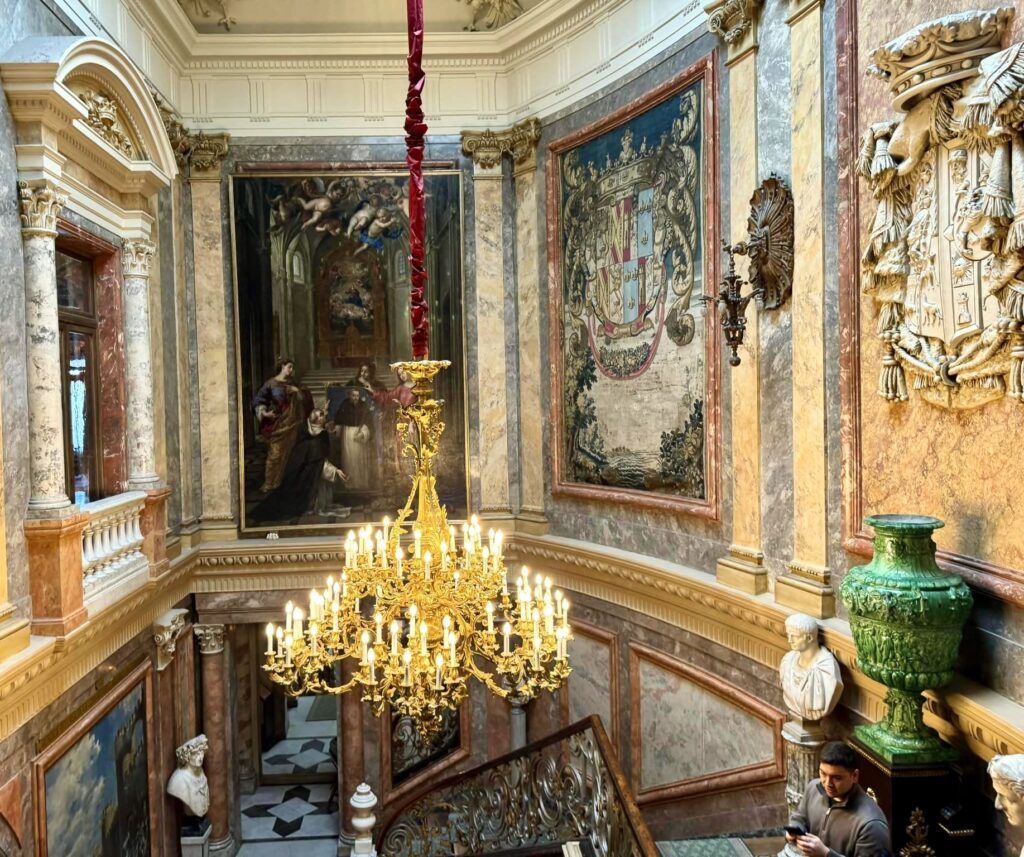
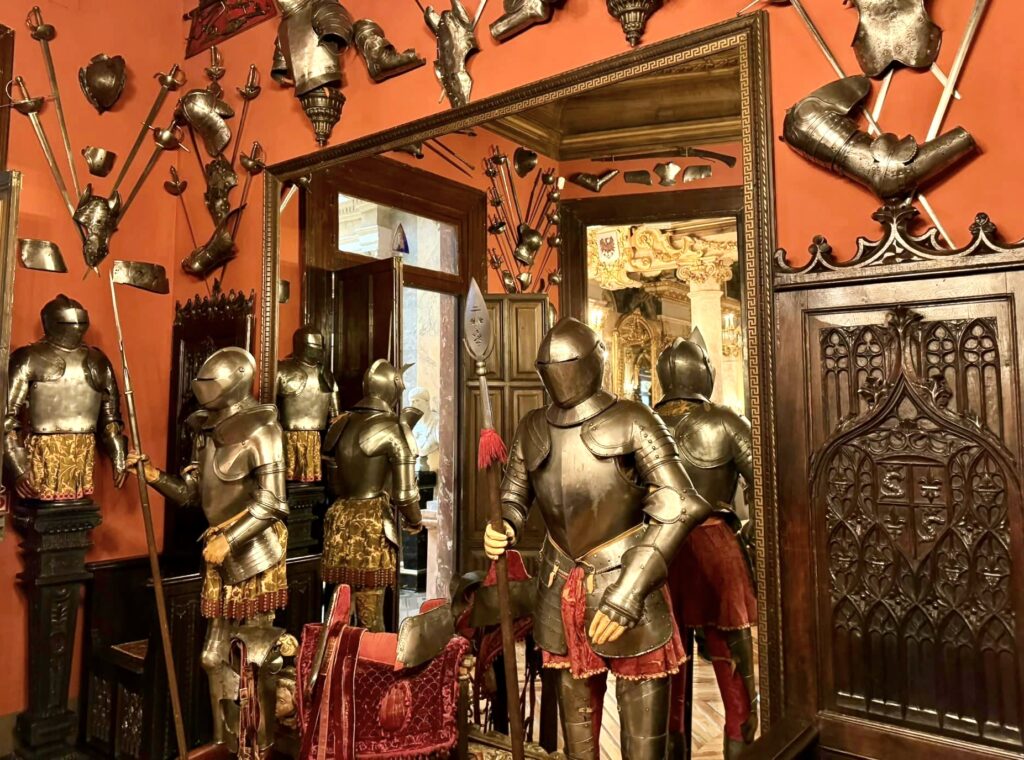
The museum’s eclectic collection consist of 50,000 items, including paintings, sculptures, armor, weapons, ceramics, coins, jewelry, tapestries, archaeological finds, and other curiosities. Even some eye popping Murano chandeliers.
Most notable are the works by El Greco, Zurbarán, Ribera, and Goya, alongside significant European and Oriental artworks. The must see masterpiece is El Greco’s The Ecstasy of St. Francis of Assisi.
The Marquis’s interest in archaeology is shown in full force through the Greco-Roman, Iberian, and Egyptian artifacts.
Tip: The museum closes at 3:00 pm, so make sure to visit in the morning. The museum also only lets in 40 people at a time, so you may have to queue up. It’s near the Temple of Debod, if you want to combine a visit.
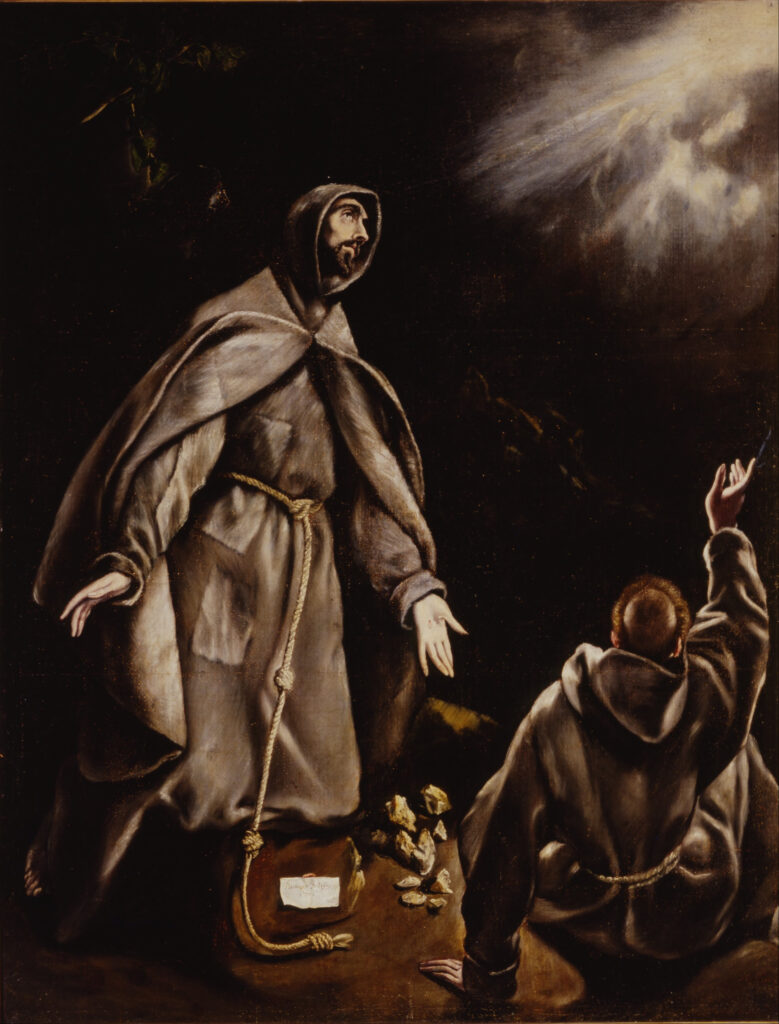
I hope you’ve enjoyed my guide to the best museums in Madrid. You may enjoy these other Spain travel guides:
- 10-14 days in Spain itinerary
- 3 day itinerary for Barcelona
- 40+ Landmarks in Barcelona
- 33 secret towns in Spain
- 10 day itinerary for Andalusia
- Most Beautiful Towns in Andalusia
- 1 day itinerary for Seville
- 3 day itinerary for Seville
- 2 day itinerary for Madrid
- 2 day Itinerary for Bilbao
Pin it for later.

